

THE MAGAZINE FOR PUBLIC SECTOR DECISION-MAKERS PUBLIC SECTOR MANAGER AUGUST 2022 THE MAGAZINE FOR PUBLIC SECTOR DECISION-MAKERS DECEMBER 2022/JANUARY 2023 Vuk’uzenzele a platform for communicators to spread government messages drives innovation and excellence at ACSA Mncwabe breaking records in aviation Moreetsi
REGULARS
8 Conversations with leaders
CEO Elaine Brass drives health and welfare SETA


10 Women in the public sector
Maxillofacial surgeon, Dr Pranusha Ramlakhan, breaks the glass ceiling
14 Trailblazer
South African Airways
Pilot Refilwe Moreetsi’s journey into uncharted territory


16 Profiles in leadership
Innovation and exclusive customer experience at the heart of ACSA CIO Mthokozisi Mncwabe
Contents: December 2022/ January 2023
From the Union Buildings
Men are the problem, but they should be part of the solution
FEATURES
22 Women empowerment key to dealing with GBVF Government tackles the drivers of violence against women in SA
24 Call for implementation of professionalisation of the public sector framework Public sector making headway in building a stronger, more capable state
26 Vuk’uzenzele: a paper for communicating with citizens
GCIS newspaper is the publication of choice for SA’s communities
2 Public Sector Manager • December 2022/January 2023
16 14 34 10

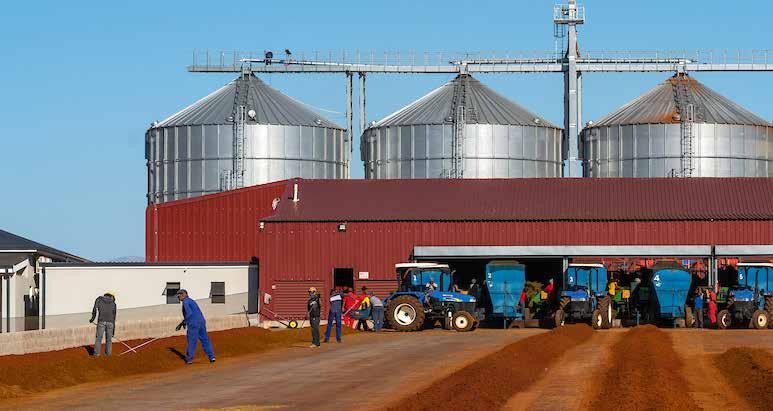

Public Sector Manager • December 2022/January 2023 3 LIFESTYLE 52 Grooming and style Party season wardrobe musthaves 54 Food and wine Festive feast 55 Travel Family-friendly festivities in Tulbagh this festive season 54 30 New tobacco Bill: strengthening public health protection measures Changing the tobacco industry step by step 34 Phaahla concerned about the annual rise in HIV cases Critical steps taken to stem increase in HIV infections 36 SA's 24-hour space weather centre takes off The continent’s only state-of-the-art centre finds its home
Hermanus 40 NASA, South Africa renew lunar exploration partnership Humans to return to the moon via Matjiesfontein 42 Pan-African Parliament ‘fully functional’ as it works towards restoring its image Changing the way Africa governs 46 Celebrating South Africa's rich history The story of SA’s democracy told through stamps 48 Calls to improve access to education for people with disabilities Breaking barriers to access through policy change 50 A boost for rooibos research Harnessing the true power of South Africa’s favourite tea 50 55 Public Sector Manager THE MAGAZINE FOR PUBLIC SECTOR DECISION-MAKERS Publishers: Government Communication and Information System (GCIS) Enquiries: +27 012 473 0010 Switchboard: +27 012 473 0000 Tshedimosetso House: 1035 Francis Baard Street (corner Festival Street), Hatfield, Pretoria Private Bag X745, Pretoria, South Africa, 0001 www.gcis.gov.za Director-General Phumla Williams Deputy Director-General: Corporate Services Nomonde Mnukwa Deputy Director-General: Intergovernmental Coordination & Stakeholder Management Michael Currin Deputy Director-General: Content Processing & Dissemination Regomoditswe Mavimbela Acting Head of Editorial and Production Zanele Mngadi Zanelemngadi@gcis.gov.za Managing Editor Tshepo Nkosi tshepo@gcis.gov.za News Editor Miriam Mokoena | miriam@gcis.gov.za GCIS Photographic Unit Elmond Jiyane Ntswe Mokoena Siyabulela Duda Kopano Tlape Busisiwe Malungwane Production Assistants Jauhara Khan Sebastion Palmer Graphic Designers Tendai Gonese Benny Kubjana
in
Everyday reconciliation is a wonderful reality
reconciliation lies not in what happened yesterday, but in what happens today and tomorrow.
It requires that South Africans put their hands up to indicate their willingness to commit to a just future.
the liberation movement, but emphasised the commitment to building a new nation based on equal rights for all.
prosecutors and investigators dealing with TRC cases, and 38 investigations into the deaths of detainees have been reopened. In addition, where amnesty was not granted by the TRC, the Directorate for Priority Crime Investigation was tasked with deciding if cases are prosecutable. Consequently, several formal inquests have been started.
The importance the of Day of Reconciliation, celebrated on 16 December in South Africa, cannot be underestimated precisely because the ideals that led to the creation of this national public holiday has the power to make real the nation of our collective reimagining.
While countless mechanisms exist to address past injustices and the horror of apartheid,
While the Day of Reconciliation was established by the democratic government post-1994, 16 December had always been a public holiday, celebrated as the Day of the Vow in commemoration of the Voortrekkers’ defeat of the Zulus in the Battle of Blood River in 1838. However, it was an equally significant day for anti-apartheid activists because it was when Umkhonto we Sizwe – the military wing of the African National Congress – was formed in 1961, heralding a turning point in the fight for freedom.
The then newly elected democratic government had the foresight to create a new holiday that not only acknowledged the significance of the day to both the Afrikaners and
Realising the complexity of the healing process, the Truth and Reconciliation Commission (TRC) was established under the Promotion of National Unity and Reconciliation Act, 1995 (Act 34 of 1995) to promote reconciliation and forgiveness among victims and perpetrators of apartheid. Over several years, it heard testimonies of thousands of people, enabling many to speak openly about the terrible things they had endured or witnessed.
While the TRC had the power to recommend reparations and grant amnesty, it also recommended that certain perpetrators of human rights abuses be prosecuted. Progress in this regard has been slow, but recent developments indicate that, at last, victims’ families will learn the truth about what happened to their loved ones.
The National Prosecuting Authority now has a team of

The successor to the TRC, the Institute for Justice and Reconciliation – established in 2000
– releases an annual South African Reconciliation Barometer. The 2021 survey revealed that respondents believed the responsibility for reconciliation lies with all South Africans, regardless of their status under apartheid.
Although incidents of racism, intolerance and the abuse of human rights are all too common in news headlines, beautiful stories unfold quietly all around us that show that compassion, connectedness and understanding are flourishing at a grassroots level.
In other words, socio-economic-fuelled criminality aside, the hope expressed in the preamble to the Constitution of South Africa is being embraced by people who demonstrate through their actions that they believe that ‘South Africa belongs to all who live in it, united in our diversity’.
Public Sector Manager • December 2022/January 2023 4 XXX MINISTER MONDLI GUNGUBELE’S MESSAGE
Mondli Gungubele Minister in The Presidency


More than 1.5 million new HIV infections were reported worldwide last year. This means that new infections dropped by only 3.6% between 2020 and 2021 – the smallest annual decline since 2016.
This information, from a recent report by the Joint United Nations Programme on HIV and AIDS (UNAIDS), titled In Danger, drove home the message that despite the first case being identified 41 years ago, the HIV/AIDS pandemic rages on.
World AIDS Day, 1 December, challenges South Africans to relook their perceptions of this virus. The stigmatisation of people living with HIV remains real and is the reason many people do not get tested or properly take their antiretroviral therapy (ART).
With South Africa having one of the highest HIV prevalence rates globally, the virus is being placed at the centre stage again, after being nudged into the shadows by the COVID-19 pandemic.
At the International Aids Conference in Canada in July 2022, Health Minister, Dr Joe Phaahla, noted that most new infections in South Africa are recorded in women between the ages of 15 and 24.
However, changing this narrative requires that interven-
SA cannot afford not to make quality healthcare a reality

suppression for 95% of those treated by 2030.
tions focus on all young people and not just females. To this end, government launched the National Youth HIV Prevention Campaign 2022 – 2025 on 30 June, to raise more awareness about the virus, encourage young people to change their sexual behaviour and urge them to get tested if needed.
Getting South Africa’s HIV response back on track is essential if the country is to meet the UNAIDS 95-95-95 2030 targets – which aim to diagnose 95% of all HIV-positive individuals, provide ART for 95% of those diagnosed and achieve viral
Although in August 2022, Minister Phaahla revealed that HIV infections in South Africa had dropped by 45% since 2010, interventions still need to be stepped-up. As of May 2022, the country was at 93-78-89. In recent developments, the South Africa Health Products Regulatory Authority approved a vaginal ring that slowly releases dapivirine, an antiviral medicine. In addition, the first injectable medication to prevent HIV, cabotegravir, is awaiting approval by the regulatory authority. Cabotegravir is long acting and is expected to improve treatment adherence.
Furthermore, the Welcome Back Campaign is being rolled out to get people living with HIV either on treatment or back on treatment; and the fifth generation National Strategic Plan (NSP) for HIV, TB and STIs (2023 – 2028) should be launched in 2023. The NSP is in line with the global Sustainable Development Goal of ending AIDS as a pandemic by 2030.
The national TB programme was also affected by COVID-19 and government has launched the TB Recovery Plan to increase screening and to get patients to commit to their treatment programmes.
Universal Health Coverage Day, is celebrated on 12 December and government’s message is that the National Health Insurance (NHI) programme will be implemented, despite continued opposition.
Much work has been done to prepare for its roll-out. Most significant are the infrastructure development programmes in NHI pilot areas, including the construction of the Limpopo Academic Hospital. More medical personnel are being trained and deployed to NHI pilot areas and a centralised patient record system is being created.
The NHI Bill is currently being considered by Parliament. Once approved, its phase-in will require a committed, peoplecentred approach by the Public Service to elevate it from an idea to a reality that radically transforms healthcare in South Africa.
Public Sector Manager • December 2022/January 2023 6 XXX MESSAGE FROM THE DIRECTOR-GENERAL
Phumla Williams, GCIS Director-General.

Top ‘Brass’ drives health and welfare SETA
Having the ability to make a difference drives Elaine Brass, the Chief Executive Officer (CEO) of the Health and Welfare Sector Education and Training Authority (HWSETA).

“The public sector is driven by the greater good for all. This is what drives me,” says Brass, who holds a Bachelor of Commerce degree in Accounting from the University of the Witwatersrand and an Honours degree in Accounting from the University of South Africa.
After passing the South
African Institute of Chartered Accountants board exam in 1996 – on her first attempt –she completed her articles at Deloitte in 1999 and worked for the company as an audit manager for three years.
“I received an excellent grounding in auditing at Deloitte and was being shaped to be strong and confident for my move to the public sector”.
She joined the AuditorGeneral of South Africa (AGSA) in Tshwane in 2003 as an audit manager.
“The transition from the private sector was smooth. I
took to the public sector like a duck to water and felt I had a mission and purpose.
“I was mesmerised by the public sector. The magnitude of the figures I was auditing, including state debt and the consolidated accounts of the country, was unbelievable. This sparked my passion for the sector,” says Brass.
In 2004, she applied for a senior manager position at the AGSA in Gauteng, where she worked until 2007. “I was given high-profile entities to audit and made a mark on each, ensuring public accountability”.
She joined the HWSETA as
Chief Financial Officer in 2007 and, in 2019, was appointed as CEO.
The HWSETA coordinates skills development in the health and social development sectors.
She says a positive difference has been made because she has an excellent team of executives on her side. “We have injected innovation into funding our programmes, established impactful partnerships and expanded our programmes to support artisans and cooperatives,” says Brass.
Public Sector Manager • December 2022/January 2023 8 CONVERSATIONS WITH LEADERS
Writer: Allison Cooper
Photos: HWSETA
An exceptional year
The HWSETA has had an exceptional year in carrying out its mandate, says Brass.

She says the launch of its career guidance portal in 2021, enabled the authority to significantly exceed its annual targets. “The portal is digitised and easy to access and use. We reached 8 402 learners during the year. In addition, our social media footprint continues to grow, which also directs learners to our portal”.
Brass says research is the cornerstone of the authority’s Annual Performance Plan (APP) and strategic plans. “This year, we produced five research reports and updated our Sector Skills Plan, thus exceeding this target”.
The SETA also completed five monitoring and evaluation reports, which assist it to improve projects in its APP.
The authority’s post-graduate programme also continues to be successful. “We have produced 35 employed and 28 unemployed learners at post-graduate level. Completed apprenticeships have been exceptional this year, with 91 employed and 158 unemployed learners”.
This success was due to block training introduced by the authority to enable employers to easily release workers for training.
development
The HWSETA has included apprenticeships as part of its rural development strategy. “Selected rural areas were chosen to recruit youth and link them to employers. This provided connections to workplaces and the strategy was successful,” says Brass.
In support of the country’s Economic Reconstruction and Recovery Plan, the authority has trained 795 early childhood development practitioners; supported training in priority areas, such as diesel mechanics, millwright and boilermaker artisanships; and supported training programmes at technical and vocational education and training colleges, as well as work integrated learning and lecturer development.
concept paper on supporting social service practitioners to become social entrepreneurs and are engaging universities to train those who are unemployed,” says Brass. The authority has, furthermore, developed, completed and submitted two new qualifications to the Quality Council for Trades and Occupations for registration – the Advanced Occupational Certificate: Occupational Health and Safety Practitioner at NQF level 5, and the National Certificate: Occupational Health and Safety Officer at NQF level 4.
Looking ahead
The authority’s sights are set to continue making an impact. It is funding and focusing on innovation, qualifications and occupations that are in
contribution to the country’s economic reconstruction and recovery.
“We will also continue to support our sectors’ needs. To this end, we have looked at different ways to improve our funding model, to ensure greater employability and sustainability in these sectors,” says Brass.
As a leader in the public sector, Brass has learnt to be humble and respect everyone.
“Patience, passion, hard work and integrity ensure you can lead with purpose and make a difference in the lives of many.
“I have never allowed the concept of a glass ceiling to occupy my thoughts and actions. I have progressed well and moved up in my career to very senior positions, without being limited,” she says.
Public Sector Manager • December 2022/January 2023 9
Maxillofacial surgeon breaks the glass ceiling
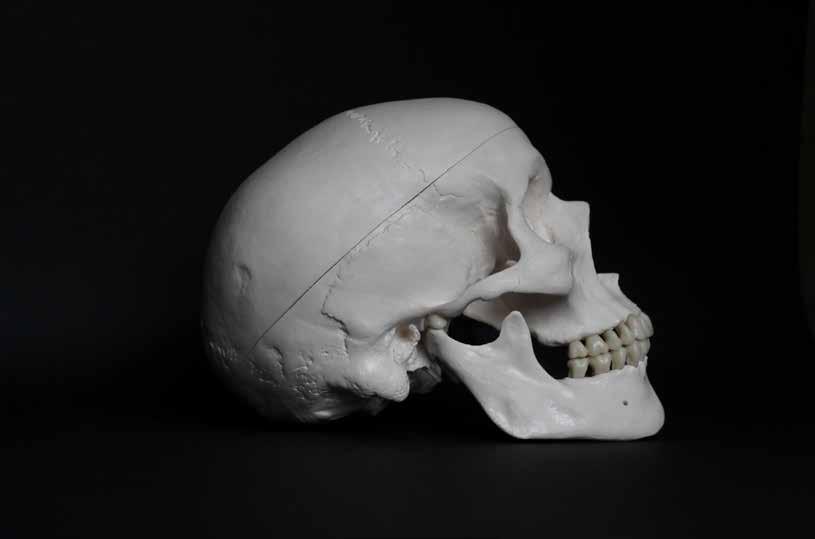
In a world where one has to be on their toes to realise their dreams, there is absolutely no substitute for hard work, faith and perseverance.
These are the sentiments of Dr Pranusha Ramlakhan, who recently became KwaZuluNatal’s first female maxillofacial surgeon.

In a media release issued by the KwaZulu-Natal Department of Health, Ramlakhan says putting a smile on injured children’s faces is the best part of her job.
“Treating children is the most heart-breaking but also the most rewarding part of my job. It is wonderful seeing the impact on a child’s life, and of course the huge smile and hugs after their recovery are an added bonus.
“During my training as a registrar, I encountered a patient, a young lady with a huge cancerous tumour in her lower jaw. She was extremely malnourished, and had also contracted COVID-19. Against all odds, we performed surgery on her.
Public Sector Manager • December 2022/January 2023 10
Writer: Malphia Honwane
IN THE PUBLIC SECTOR
WOMEN
Photo: Unsplash.com
Dr Ramlakhan
Photo: KwaZulu-Natal Department of Health
She stayed with us for three months as we rehabilitated her. This included a month in the Intensive Care Unit, where her survival postoperatively was in doubt. It was heart-warming to see her walk out of the hospital happy and bubbly,” she says.
KwaZulu-Natal Health MEC Nomagugu Simelane has described Ramlakhan as an inspiration and “trailblazer” who must be emulated.
“We are extremely pleased and proud of what Dr Ramlakhan has achieved. It is women like her who keep breaking down barriers and pushing the envelope, to prove to all that, indeed, women are capable of achieving anything, and that no field should be regarded as the sole domain of men. We need more people like her” says the MEC.
Born in Durban and currently working at King Edward VIII Hospital, Ramlakhan says her biggest wish is for people to stop alcohol and drugs abuse; and also desist from risky behaviours, such as drunken driving and speeding, which are among the leading causes of road crashes, thus putting people’s lives in danger and burdening public service trauma and maxillofacial units.
Special type of dentistry
Maxillofacial surgery is a special type of dentistry that involves an operation to correct a disease, injury or defect on the face, jaw or mouth. Maxillofacial surgeons perform various procedures to reduce pain, fix deformities and restore function in the lower face.
“It is a specialty that combines surgical training with dental expertise to correct a wide spectrum of diseases, injuries, tumours, defects and deformities in the mouth, head, neck, face and jaw area. This includes bones and soft tissues of this region.
“We, at King Edward VIII Hospital, mainly see trauma patients who have sustained injuries from assaults, gunshot wounds and motorvehicle accidents. We also treat patients with adversely impacted teeth, cysts and
tumours, as well as severe infections and their side effects.
“As a maxillofacial surgeon, you have to consult with patients, diagnose their conditions, plan surgery and operate in theatre. We also render after-hour service for emergencies,” says Ramlakhan.
She holds a Bachelor’s degree in Dentistry from the University of the Western Cape; and a Master’s in Maxillofacial and Oral Surgery from the University of the Witwatersrand.
Prior to her new adventure, she worked as a dental surgeon at the Department of Maxillofacial and Oral Surgery at King Edward VIII Hospital after completing her community service in the eThekwini District.
How it all started
Despite being the first woman in the province to
break into this male-dominated career space, Ramlakhan says what makes her achievement phenomenal is that the maxillofacial surgeon bug hit her as far back as her university days.
“My interest in the medical field started earlier on, and during my university years, I realised a special interest in surgery. After matriculating, dentistry was the perfect field for me to get into.
“During my fourth year of study, I used to shadow maxillofacial registrars to see the work they were doing. This sparked my interest in maxillofacial and oral surgery. After completing my degree in Dentistry, I was placed at the eThekwini District to complete my community service. Part of this rotation was at King Edward VIII Hospital, where I gained experience in surgery and my love for surgery was confirmed,” she says.
She then got absorbed by the hospital as a permanent employee, and this fuelled the desire to take her career to greater heights. She pursued courses in acute cardiac life support, basic surgical skills and advanced trauma life support, which successfully combined to elevate her towards the
Public Sector Manager • December 2022/January 2023 11
"It is a speciality that combines surgical training with dental expertise to correct a wide spectrum of diseases, injuries, tumours , defects and deformities in the mouth, head, neck, face and jaw area "
maxillofacial specialty.
She says becoming a registrar was not easy. “After completing my Maxillofacial Part 1 exams with The Colleges of Medicine of South Africa, I struggled to get a registrar post. Many years later, Oral Health Services launched a programme to train registrars from KwaZulu-Natal. I was interviewed for the post and was successful,” adds the surgeon.
Like many other jobs, being a maxillofacial surgeon is not a walk in the park, but Ramlakhan says the feeling of contentment that comes after successfully executing her tasks is unmatched.

“It is a very demanding field, which means long hours in theatre as well as being on call at any hour of the day or night (holidays included). As such, it means that sometimes I have to miss special life events,” she remarks.
Breaking new grounds
Ramlakhan believes her achievements will encourage more women to venture into male-dominated fields.
“It becomes particularly demanding as social norms dictate that women are the primary caregivers, moth-
ers and wives. But we are slowly trying to break these stereotyped roles – to show that working women can also have demanding careers and [still] have a family. As we promote this more and more, we hope that more women are encouraged to join the fraternity,” says Ramlakhan.
The surgeon attributes her success to her faith and the support of her family.
“I missed some important special days and milestones along the way, but my family has been very understanding and supportive throughout,” she says.
Ramlakhan’s short-term goal is to complete her Master’s degree in Public Health Management and, over the longer term, she wants to finish her fellowship in trauma.
To those who want to
venture into her profession, the surgeon has this to say: “Anything is possible when you believe in yourself. Follow your dreams. If maxillofacial surgery is your passion, then follow it. I embarked on my registrar training with a two-year-old toddler – a journey which made climbing Kilimanjaro seem easier”.
Public Sector Manager • December 2022/January 2023 12
IN THE PUBLIC SECTOR
WOMEN
Photo: Unsplash.com


Moreetsi’s journey into uncharted territory
At the age of seven, Refilwe Moreetsi (35) boarded her first flight, and she instantly knew that she wanted to become a pilot.

What she didn’t know, however, was the fact that, years later, she would break records as one of the first two black women to command a South African Airways (SAA) commercial flight.
“Coincidentally, my first flight was an SAA plane from Johannesburg to Durban. On that day, I got an opportunity to go to the flight deck and I just knew this is what I wanted to become,” says Moreetsi, who now works as a Senior First Officer for the same airline.
Her career in aviation started in 2006 when she joined the South African Air Force (SAAF) to train as a pilot.
“For the first year at the SAAF, I went through basic military training and an officers’ forma-
tive training before training as a pilot. Military training instills discipline, teamwork and leadership skills, among others,” she says.
She then did a one-year course that covered aeronautical subjects. She also holds a Higher Certificate in Military Studies from the University of Stellenbosch. Moreetsi has completed various studies in her field, including a pilot course from the Central Flying School, a private pilot’s licence on helicopters from Starlight Aviation Group and Oryx helicopter training from the Helicopter Flying School.
The vibrant young pilot is also involved in numerous aviation outreach programs in Limpopo, Mpumalanga and Gauteng.
Career journey
“After qualifying as a pilot, I chose to fly helicopters in the SAAF because its aerodynam-
Public Sector Manager • December 2022/January 2023 14 TRAILBLAZER
Writer: More Matshediso
Photos: SAA
ics just fascinated me. I flew the Oryx helicopter – one of my best experiences – and a lot of my background and flying skills come from that,” she explains.
Part of her job at the SAAF was operational flying, including humanitarian aid, flood relief, firefighting, peacekeeping missions in the Democratic Republic of Congo (DRC), and search and rescue missions. Her job also included flying the Head of State.
Moreetsi also worked for the South African Express Airways as a First Officer. She flew the Dash8 Q400 Airplane, which she thinks was a good transition for her before joining the SAA.
“Upon arrival at the SAA, I flew the Airbus A320 until now. My routes include Durban, Cape Town, Mauritius, Harare, Kinshasa and, soon, we will be flying to Namibia and Malawi,” she explains.
Due to her pilot experience, Moreetsi was ultimately appointed as Senior First Officer at the SAA.
When flying planes, the Captain and the First Officer take turns – while one is flying the plane, the other one provides support, such as communicating with Air Traffic Controllers.
Making history
There are seven management positions that pilots can occupy concurrently while flying an
aircraft – Moreetsi is the first black female to occupy one of these positions as a Fatigue Risk Management Specialist at the SAA.
In this role, she is responsible for managing and monitoring the airline safety risks related to fatigue.
“Because pilots and cabin crew are shift workers, it is my responsibility to ensure that all are afforded adequate rest because we need to be at the highest level of alertness when we do our job,” she says.
Although occupying this position is a great achievement, Moreetsi says she was not aware that she would one day land this job because after graduating, she decided to be more involved in the corporate side of aviation.
“I believe I got this position
through my education, hard work and experience. That is why it did not matter to me that I was the first black female to occupy the position. However, I do understand why it is a big thing and why it is celebrated,” she says.
She encourages more women and girls to look for career opportunities in the aviation industry, which is currently dominated by men.
In October 2022, Moreetsi and Captain Annabel Vundla made history when they became the first black women to command a commercial flight in the history of the 88-year-old airline. Their flight was from Johannesburg to Cape Town.

Doing what she loves
The saying about doing what
you love and never working a day comes to mind when Moreetsi talks about her job. She enjoys flying to different destinations, watching beautiful sunrises and sunsets. “It’s the best office view...
“I do not take those moments for granted. It never gets old for me, and it is so surreal. The most exciting part of my career was flying helicopters because I found them to be a little more adventurous... the mountain flying, landing on top of a waterfall, inside a waterfall, and when I was in the DRC, I was right next to an active volcano and I think those are once in a lifetime experiences,” she says.
Dream career
Unlike Moreetsi, not many people get to realise their childhood dreams. Sometimes she forgets how she has always wanted this.
Her career goal is to fly a bigger jet, just for the experience and to reach different destinations as a pilot.
She says working for the SAA is a dream come true because that is where her desire to become a pilot was born.
As a young girl from Tzaneen in Limpopo, Moreetsi says she will always appreciate the support that her parents and sisters gave for her to achieve her goal. She is also grateful for the love and support of her husband and two children.
Public Sector Manager • December 2022/January 2023 15
Refilwe Moreetsi and Annabel Vundla ready for take-off.
Innovation and exclusive customer experience at the heart of ACSA CIO
More often, people view public servants as corrupt and inefficient, but this is not true for officials like Mthokozisi Mncwabe, who work tirelessly to provide citizens with the best service.
Mncwabe is the Chief Information Officer (CIO) of Airports Company South Africa (ACSA) – a company that owns and operates the country’s nine principal airports, including three international gateways - O.R. Tambo, Cape Town and King Shaka international airports.

ACSA provides world-class secure infrastructure for airlines to transport people and goods.
“I arrive at work at 07:00 every morning to make sure that ACSA keeps functioning,” he says.
In October, Mncwabe was elected the inaugural Deputy President of Airports Council International (ACI) Africa’s Facilitation, Technology and Innovation Committee during the council's 2022 World Annual General Assembly held in Morocco.
Globally, ACI represents the
Public Sector Manager • December 2022/January 2023 16 PROFILES IN LEADERSHIP
Writer:
More Matshediso
Mthokozisi Mncwabe.
Photo: ACSA
collective interests of airports around the world to promote excellence in the aviation industry. On the continent, it serves as an international association of African airports – every airport in Africa is a member of ACI Africa.

Collaborating through technology
“Our component committee at ACI Africa aims to share knowledge, standardise procedure and form collaborations among African airports using technology,” he says.
As the Deputy President, Mncwabe ensures that all the heads of technology and innovation across airports in the continent are pulling in one
direction.
“We exchange knowledge and best practices. We are also members of the ACI World and that allows us to exchange best practices with international states. This will help us introduce new innovations across African airports,” he says.
Now that he holds a high position at ACI Africa, Mncwabe plans to address some of the challenges experienced when traveling within Africa.
He recently experienced the frustration of having to get a connecting flight to Morocco in Europe.
“This should not be the case because South Africa and Morocco are in Africa,” he says.
A balancing act
Mncwabe manages both jobs concurrently, and has ACSA’s full support for his role at ACI Africa.
At ACSA, Mncwabe is accountable for running technology operations and generating Information Technology (IT) revenue.
His job covers all the applications, services and systems that support the airports functions, such as finance, human resource, supply chain management and infrastructure, among others. Through IT, ACSA uses a functional operating model to sell services to clients in order to generate revenue.
“About 80% of services provided by the airports are run
on technology. Our services are also essential for airports security. A lot of surveillance across our network is done through our 8 000 CCTV cameras. We also put systems in place to ensure safe landing of airplanes in order to prevent fatalities,” he says.
Mncwabe joined ACSA in 2019, a year before the COVID-19 pandemic wreaked havoc throughout the world.
Upon joining the company, he led a team of 84 IT specialist, who came up with a technology strategy that ACSA approved and was supposed to be implemented from 2020 to 2027, at a cost of R3 million. Unfortunately, COVID-19 hit South Africa and the national lockdown led to the strategy being held in abeyance.
“There was no traffic at the airport and we lost money and human resources. We now have 52 employees in the division. Post COVID-19, we had to prioritise maintenance of what we have and cut down on introducing new systems that are costly,” he says.
Career path
Mncwabe’s academic achievements and work experience immensely contributed to the leader that he is today.
He holds a Bachelor of Science degree in Mathematics
17
Photo: Unsplash.com
PROFILES IN LEADERSHIP
and an Honours degree in Computer Science from the University of KwaZulu-Natal.
He kick-started his career as an intern for development infrastructure support at Eskom.
He later worked as a consultant for Hewlett-Packard Company and was placed at Telkom. Telkom recruited him to manage infrastructure.
He then joined Cell C as one of its first employees, and worked for the mobile network for four years.
Afterwards, he worked for ABSA bank for eight years in different divisions, including infrastructure, service management, IT and shared services.
While at ABSA, Mncwabe completed a Master’s in Business Administration degree from Milpark Business School and an executive development programme through ABSA and the Gordon Institute of Business Science.
He then joined the South African Post Office (SAPO) as a CIO for Post Bank, and ultimately for the SAPO Group.
Innovation
“I was involved in the implementation of a payment solution for the South African Social Security Agency. The agency signed a deal with the SAPO to pay beneficiary
grants. Therefore, I implemented the current solution that is [being] used to pay social grants,” he adds.
At ACSA, Mncwabe is planning to improve passenger experience across South African airports by helping keep digital records of those travelling in and out of the country.

“We want passengers to pass through security check points with ease, and be able to travel from our airports to anywhere in the world without hardships. The Department of Home Affairs (DHA) is working on new technology that will improve security at airports,” he says.
Currently, ACSA is implementing Phase 1 of the automated border control gates at the Cape Town International Airport for international travellers.
“When you come through the gate, you scan your
passport, boarding pass and fingerprint, and your information is automatically captured on the system,” he says.
According to Mncwabe, Phase 2 of the project will be implemented at the O.R. Tambo International Airport in 2023. The aim is to have the same innovation at all ACSA airports, including domestic travellers.
“Phase 2 will feature the facial recognition technology. The DHA is enabling the facial recognition database and we want to be the first to use it. When this feature goes live, passengers will no longer have to use fingerprints,” he says.
When Mncwabe joined ACSA, airports were outsourcing free WiFi services, but through his leadership, this service is now being offered internally – airports now have their their own free WiFi services.
ACSA also has a mobile App that is available on Google Play App Store and IOS. Phase 1 of the ACSA App is already live, and phases 2 and 3 are expected to be launched soon. The App will serve as a onestop-shop in aviation.
Once fully functional, the ACSA App will enable passengers to have access to airport information, including pricing of all airlines, car rental services, book parking for their cars at the airports and do online shopping from selected stores and collect their items upon arrival at the airport.
“This gives passengers a novel travelling experience,” he says.
He believes that “nothing is impossible for us to achieve when we have a shared commitment to working together as a nation to find and apply solutions”.
Public Sector Manager • December 2022/January 2023 18
Travellers passing through airport security.
Photo: Unsplash.com
What will the neighbours say?

There is no excuse for abuse. People can only help if they know. TELL SOMEONE. Violence and abuse are poison to society. Let’s make it stop. Police: 10111 Stop Gender Violence: 0800 150 150 Childline: 0800 055 555
Men are the problem, but they should be part of the solution
In my address to the second Presidential Summit on Gender-based Violence (GBV) and Femicide at the beginning of November, I said that we are a nation at war with itself.
This is borne out by the crime statistics for the last quarter, which were released just ahead of the start of the annual 16 Days of Activism for No
Violence against Women and Children.
Between July and September this year, 989 women were murdered, 1 277 were victims of attempted murder and more than 13 000 were victims of serious assault. In just these three months, more than 10 000 rape cases were opened with the South African Police
Service (SAPS).
Not even children, our most vulnerable citizens and most deserving of our care and protection, were spared. In the six months to September 2022, over 500 children were killed. We are in the grip of terrible crimes in which offenders are known to the victims. Women and children are being violated not only by strangers but by people who are known to them – by their fathers, boyfriends and husbands, by colleagues, teachers and even classmates.
However, as a society, we are not powerless to stop these crimes. We can stop GBV.
Over the last few years, there has been a growing mobilisation of all sectors of society to stop the abuse of women and children. There have been some areas of progress.
The latest crime statistics show some of the successes of the criminal justice system in
bringing perpetrators to book. In the reporting period, the SAPS Family Violence, Child Protection and Sexual Offences units arrested over 4 000 alleged perpetrators of GBV and 410 alleged rapists were traced and arrested.

More than 17 000 trial-ready GBV cases were processed by teams of the SAPS and the National Prosecuting Authority. The courts are also handing down heavier sentences to perpetrators.
While we should be encouraged that many of the perpetrators are not being allowed to get away with their crimes, our foremost task is to prevent men and boys from becoming abusers in the first place.
Men are the perpetrators of GBV and it is, therefore, men that need to change. It is men – as husbands and partners, as fathers, colleagues, peers and classmates – who need to
Public Sector Manager • December 2022/January 2023 FROM THE UNION BUILDINGS
A message from President Cyril Ramaphosa Photos: Saif71.com on Unsplash
consider their own attitudes towards women and girls.
To give meaning to 16 Days of Activism, we now need to engage the men of South Africa in a dialogue about their responsibility towards women and toxic masculinity. All of society should be mobilised to organise these men’s dialogues.

The government, nongovernmental organisa tions and the private sector should be encouraged to support such dialogues in every workplace, place of worship, school, college and university, and in every community. Every day various entities devote resources to public engagements, conferences and
seminars on various pressing social, economic and political issues of the day. These are forums where this engagement should happen.
Eradicating GBV is no less urgent or important. These crimes affect every aspect of our society, including health and well-being, safety and security, and economic growth and productivity.

In these dialogues, we need to examine our understanding of sexual consent. We must challenge the myth that rape is only considered rape if it involves a stranger, or if the victim responded by screaming for help, fighting back or reporting the matter immediately to the police.
By bringing together men of
all races, classes and generations to speak frankly about their understanding of masculinity, we can show how some assumptions and practices that many people consider ‘normal’ are harmful to women and children.
We must change beliefs that men are strong and women are weak, that men have to be in charge, or that men can do as they please with women. Men need to understand that they can and should express their pain and frustrations without inflicting harm on others.
As President, I stand ready to participate in men’s dialogues. I call on Ministers, Premiers, religious, political and community leaders, sports people, artists, celebrities and business people to do the same.
The men of South Africa owe it to the women and children of this country to take up the struggle against GBV. These men’s dialogues can be platforms for men to challenge each other to become better men, more responsible, more understanding and more caring.
Public Sector Manager • December 2022/January 2023 21
Women empowerment key to dealing with GBVF
was, “Socio-Economic Rights and Empowerment to build Women’s Resilience against Gender-Based Violence and Femicide: Connect, Collaborate, Contract!”.
“The call for the economic empowerment of women cannot be separated from the broader call for a violence-free South Africa. Both need to be met with urgency.
“The scourge of GBVF continues to undermine our efforts of building a democratic, nonracial, non-sexist, and united South Africa,” the Minister said.
Fighting the root cause
a central tenet to ensuring a more equal society for all.
“Therefore, the theme for this year’s 16 Days of Activism aims to strengthen programmatic approaches to accelerate the social and economic empowerment of women.
“Our intention throughout the year has been to make the linkages between building women’s resilience through socio-economic empowerment and its influence in decreasing women and children’s vulnerability to forms of violence, including GBVF.
Empowering women by giving them opportunities to become economically independent is key to tackling Gender-based Violence and Femicide (GBVF) in the country. This is according to Minister in the Presidency for Women, Youth and Persons with Disabilities, Maite Nkoana-Mashabane.

“The biggest challenge for women is economic power.
Let’s expose them to opportunities to generate their own income so they can walk away from abusive relationships,” she added.
The Minister was addressing the launch of the 16 Days of Activism for No Violence Against Women and Children campaign at the Johannesburg Expo Centre on 25 November 2022. The theme for the 2022 campaign
She added that at the centre of government’s response to GBVF is tackling the drivers of violence in communities. This includes challenging the socioeconomic status of women and other vulnerable groups, including the youth, persons with disabilities and LGBTQIA+ persons.
“Inclusive economic empowerment remains a key priority of the government and it is
“Ultimately, we are saying that walking away from an abusive situation must not lead women and children into poverty,” the Minister said.
Government used the launch to gather women in business across different sectors, including women’s Small, Medium and Micro Enterprises (SMMEs), cooperatives and women informal traders.
“The rights of women to dignity, security, safety and protection is non-negotiable. We need to collaborate on developing,
Public Sector Manager • December 2022/January 2023 22 FEATURE
Source: SAnews
Minister in The Presidency for Women, Youth and Persons with Disabilities, Maite NkoanaMashabane
implementing, supporting and monitoring programs for equitable job creation, representation and ownership by women.
“This includes strengthening the public-private sector partnerships to facilitate economic opportunities for women. In addition, we must accelerate initiatives to empower our women who work the land,” added the Minister.
She reiterated calls for land redistribution and agrarian reform. This includes fund-
ing women farmers to drive transformation deliverables
through broadening ownership of SMMEs led by women, youth and persons with disabilities to build and capacitate entrepreneurship and economic resilience.
Women’s Economic Assembly
The Minister said the Women’s Economic Assembly (WECONA) continues to empower women economically.
“WECONA continues to mobilize and establish publicprivate sector partnerships to enable women-owned enterprises to participate in procurement opportunities within industry supply chains.
“WECONA has engaged with key sectors to advocate and negotiate for the establishment of transformation targets and actions,” the Minister said.
These sectors include agriculture, steel, energy, poultry, textiles, fast-moving consumer goods, automotive, finance, transport and logistics, tourism, information and communications technology, mining, infrastructure, and the Green Economy.
“In addition, WECONA has been instrumental in driving advocacy and accountability in the implementation of the 40% preferential procurement in the public sector towards women-
owned businesses,” added the Minister.
WECONA Co-Chairperson Namhla Mniki said her organization will continue to work for and fight for the economic empowerment of women.

“We recognize that the less empowered we are as women economically, the more it becomes impossible for us to leave abusive relationship.
“The indignity of poverty and the indignity of economic exclusion leads to increased vulnerability generally not just to GBVF,” Mniki said.
She said WECONA is working on a bold and radical programme aimed at promoting women empowerment.
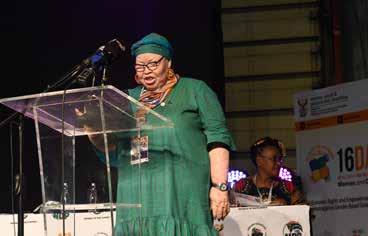
“Women must claim economic power and the economy must create the opportunities for women to own their economic power, ownership of land, ownership of manufacturing infrastructure, ownership and access to financing so that we can become business owners,” added Mniki.
WECONA is a critical vehicle to address women’s unequal economic and social position, through access to government and private sector procurement, employment, housing, access to land, financial resources and other income generating initiatives.– SAnews. gov.za
Public Sector Manager • December 2022/January 2023 23
Call for implementation of professionalisation of the public sector framework
The National Planning Commission (NPC) has called for a sense of urgency in the execution of the National Implementation Framework towards the Professionalisation of the Public Sector.

Cabinet recently approved the framework, which provides five pillars on interventions in professionalising the Public Service.
The pillars include pre-entry recruitment and selection within the Public Service; induction and onboarding; planning and
performance management; continuous learning and professional development; and career progression and incidents.
“The focus should now be on implementation. While some aspects of the framework will need legislative amendments, ministerial directives and regulations, others can be implemented immediately,” said the NPC.
The framework is an important milestone towards realising the National Development Plan’s (NDP) goals for a capable and developmental state. The NDP
is the blueprint for socioeconomic transformation of the country.
“Ultimately, the framework institutionalises meritocracy in the State’s human resources practices by giving effect to the NDP’s recommendations about the type of public sector required to drive a developmental state agenda in a democratic system of government.
“Countries which have institutionalised professionalism in their public service system, especially those which are part of the Organisation for Economic
Co-operation and Development, such as Australia and Estonia, and in Asia, such as China and Singapore, are making significant progress in their development commitments,” added the commission.
Lessons from state capture
In his weekly newsletter, From the Desk of the President, dated 31 October 2022, President Cyril Ramaphosa noted that state capture exposed the fragility of the public sector and created a need for government to
Public Sector Manager • December 2022/January 2023 24 FEATURE
Source: SAnews
Additional reporting: Miriam Mokoena
Busani Ngcaweni, Principal: National School of Government at the Editors' Breakfast Engagement session.
strengthen the sector.
“The report of the State Capture Commission lays bare how organs of state were systematically weakened by undue political and corporate interference. It further details instances where individuals without the necessary competence and experience were appointed to strategic positions so that they could be manipulated by private interests.
“As we recover from state capture, we must ensure there are consequences for the perpetrators of state capture. We also need to make sure that public institutions can never be weakened in this way again," said the President.
He described the framework as “one of the most significant developments in public service reform since the advent of democracy,” and urged public servants to embrace it “as an important tool for their progression as they work on the frontline to deliver on the promise of a better life for every South African”.
On 14 November 2022, the Government Communication and Information System in partnership with the National School of Government hosted an Editors' Breakfast Engagement session to create a platform for conversation on the best practices of a professional public sector.
Addressing the session, the Chairperson of the Ministerial
Advisory Panel responsible for the Review of the Draft Professionalisation Framework, Professor Mashupye Maserumule, said the country will not be able progress if the State is not capacitated.
“We can talk about fighting poverty and other aspects that are key to the development of the country but until such a time that we address the question of the capacity of the State, you have not made any significant progress,” he said.
Amendments to legislation
The NPC has welcomed the initiative to amend the existing legislative framework so that
all spheres.
The amendments to the Municipal Systems Act, 2000 (Act 32 of 2000), which President Ramaphosa recently signed into law, sets the trend by, among others, barring municipal officials from holding party political office.
“The amendments to the Public Service Act [of 1994] are of particular importance as they aim to devolve administrative powers to heads of departments, thereby aligning them to their financial responsibility as prescribed in the Public Finance Management Act (PFMA), 1999 (Act 1 of 1999).
“This will free Ministers to focus on strategic policy issues.
“As we recover from state capture, we must ensure there are consequences for the perpetrators of state capture. We also need to make sure that public institutions can never be weakened in this way again"
the NDP recommendations related to building the capacity of the State are written into law, specifically through amendments to the Public Service Act, 1994 (Act 103 of 1994), the Public Administration Management Act, 2014 (Act 11 of 2014) and Public Service Commission Act, 1997 (Act 46 of 1997).
The commission has urged the finalisation of these as they are at the core of institutionalising a professional state across
The Act, as it currently stands, assigns final accountability and authority on human resources and organisational establishment to Ministers while the PFMA of 1999 assigns the powers to manage public resources to heads of departments.
“The Mapungubwe Institute for Strategic Reflection’s 2013 study on the evolution of the post-apartheid state indicates that this inconsistency exacerbated conflicts between politi-
cal and administrative heads of departments across government, including at state-owned enterprises and may be the cause of the high turnover of the heads of departments,” the NPC said.
Expediting these amendments will contribute to the implementation of the NDP’s recommendation to stabilise the political-administrative interface.
“The NPC also welcomes the decision to designate the Director-General in the Presidency as the Head of Public Administration, nationally, and Directors-General in the offices of the Premiers, provincially, and the extension of their tenures to ten years, subject to performance, as a step in the right direction towards establishing stability.
“The proposed amendments to the Public Administration Management and the Public Service Commission Acts are equally important measures for the implementation of the framework and the proposals in the NDP,” the NPC said.
The amendments aim to create a single public service and repurpose the Public Service Commission as the custodian of norms and standards for the administration of the State, including local government, as well as national and provincial public entities covered by the PFMA of 1999. – SAnews.gov.za
Public Sector Manager • December 2022/January 2023 25
Writer: Phakama Mbonambi Additional reporting: Kopo Ndhlovu
Vuk’uzenzele:
Vuk’uzenzele, a free government newspaper published twice a month, remains a flagship product of disseminating government information and continues to fulfil its mission of being a paper for the people through its empowering content.
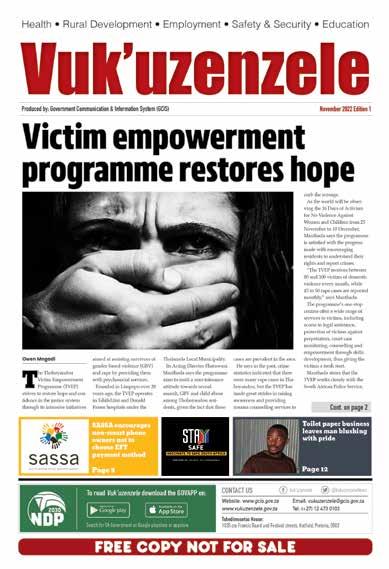

This is according to research conducted by the Government Communication and Information System’s Research unit between 22 January and 8 April 2022.
The aim of the research was to ascertain the newspaper’s reach, profile of readers by segments, readers’ experience and content interests.
The paper is committed to making a difference in the lives of South Africans. Formed in September 2005 as a magazine, the publication
later became a newspaper. The paper’s mission is to inform South Africans, particularly those on the economic margins, about opportunities that government constantly creates to improve people’s lives. It is primarily distributed through knock-and-drop, and smaller proportions delivered in public places with a high foot volume, such as clinics, spaza shops and municipal buildings.
The research was conducted on a sample of 3 500 people spread across all nine provinces, and different races and gender. In January 2022, qualitative focus groups were also conducted across the country to explore South Africans’ opinions on the paper.
Target audience
The paper's primary target audience is Rooted Realists, about 48% (27.8 million) of the country's adult population. They have the most limited access to information as a result of being in rural areas, high employment rate, low levels of education and low annual household income.
While they face huge financial challenges, they rely on government grants and remain hopeful about changing their circumstances. They also rely on information from
• December 2022/January 2023 FEATURE
government to search for work opportunities.
The paper’s secondary target audience consists of City Seekers, who live in urban areas, are ambitious, careerorientated and constantly look for work opportunities to better their lives. They make up about 25% (14.4 million ) of the adult South African population.
The third target audience is the Safely Suburbans – they live in non-metro urban areas and peri-urban areas. They generally believe that their quality of life has declined and blame their lack of appropriate education as an obstacle to accessing employment or better jobs.
Key research findings
Due to budget limitations, only 850 000 copies of Vuk’uzenzele are currently being printed monthly. On average, 552 500 (65%) of these copies are distributed to Rooted Realists and the rest are distributed to City Seekers and Safely Suburbans.
Given the primary targeted population, these copies only reach approximately 2% of the intended audience – an indication that more financial resources are needed to reach information deprived communities.
The research found that of those who had access to a
copy of the newspaper, half were Rooted Realists. About a third (32%) of City Seekers also reportedly received the paper.
There were some positive circulation insights, with a quarter of Vuk’uzenzele readers (26%) saying they shared it with two to four other people, another 26% saying they shared the paper with one other person and 9% sharing it with five or more people.

As a result, from the 850 000 printed copies, approximately 2 337 500 people access the paper. Assuming that the newspaper is shared with Rooted Realists, that translates to about 8% of the intended audience – an indication that
key government messages can circulate widely through Vuk’uzenzele
Relevant information
The target audience said the paper’s content was relevant, resonated with them and responded to their information needs. The majority of readers (93%) said they enjoyed the content of Vuk’uzenzele and found it useful.
“I would say the paper is good,” said one Safely Suburban from Umhluzi, Mpumalanga.
A Rooted Realist in Inanda, KwaZulu-Natal, said; “... you can understand that when I want a
Public Sector Manager • December 2022/January 2023 27
tender, I have to do this”.
Around 46% and 34% of Rooted Realists and City Seekers [respectively] revealed that the paper created awareness on government programmes. In addition, 27% of Rooted Realists and 34% of City Seekers stated that the newspaper helped them with information on how to find jobs.
Conclusion
Even though the monthly print run covers only a fraction of the targeted audience, the paper is doing well in reaching the intended target audience and is read by far more people through sharing.
Most respondents (91%) said they would recommend it to others.
“I would recommend it to someone who is looking for work and parents because the paper also advertises bursaries and scholarships,” said a respondent from Diepsloot, Johannesburg.
A total of 7 in 10 people (72%) said they still preferred the hardcopy version of Vuk’uzenzele even when other platforms such as Vuk online, website and the mobile App were proposed as alternatives.

What
findings
Effective government communications, a mandate of government communicators, plays a huge role in helping
to shape the national mood, boost public confidence and raise public awareness on government programmes and initiatives.
Vuk’uzenzele, with its high circulation, content relevance and usefulness, should be a platform of choice for all government communicators, especially when sharing information that is relevant to the target audiences.
In South Africa, a country still grappling with enormous challenges, including poverty and inequality, Vuk’uzenzele has a crucial role to play in the dissemination of empowering information and content that addresses concerns of ordinary South Africans.
The paper also showcases
inspiring stories of beneficiaries of government programmes and initiatives, and stories of ordinary South Africans who accomplish great things despite the odds.
These are citizens who live up to the spirit of the paper’s name – Vuk’uzenzele. Finally, government communicators should note that, for now, the intended target audience still prefers getting the paper as a hardcopy.
To share stories on Vuk'uzenzele, please send an email to vukuzenzele@ gcis.gov.za. For advertising, please contact Jauhara Khan on Jauhara@gcis.gov. za or 012 473 0010.

Public Sector Manager • December 2022/January 2023 28 XXX
communicators can do with these
FEATURE
Photo: Pexels
Vuk'uzenzele is published online and as a print version
WATER-SAVING TIPS


Taking a bath can use between litres of water per bath.
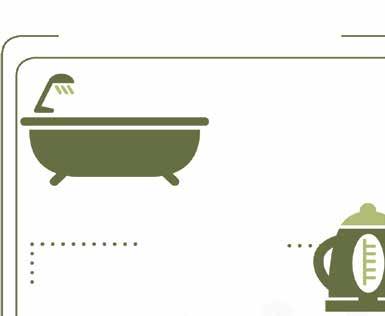
80 and 150
Kettles should to the brim but with just enough water for your needs. This will reduce your electricity bill too.
containers like cooking pots, as this may result in using more energy to heat the water.
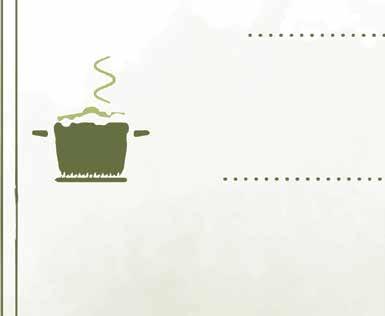
Fix a leaking toilet 100 000 otherwise it can waste up to litres of water in one year.

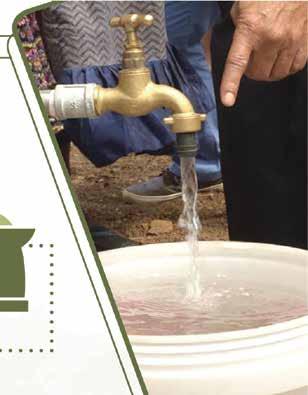

Together we move South Africa forwar d

New tobacco Bill: strengthening public health protection measures
The Control of the Tobacco and Electronic Delivery Systems Bill, which was approved by Cabinet in September 2022, is a crucial cog in the journey to ensuring that health is indeed one’s wealth.
Inherently each person is responsible for their health, however, the math it is not always that simple and the draft Bill, that is currently before Parliament, is aimed at strengthening South Africa’s public health protection measures.
The Bill seeks to repeal the Tobacco Products Control Act, 1993 (Act 83 of 1993), as amended. It will align the country’s public health measures
with the World Health Organisation (WHO) Framework Convention on Tobacco Control – to which South Africa is party.
The Bill has gone through extensive consultation with various stakeholders, including the tobacco industry, civil-society organisations and relevant government departments.
The Global Adult Tobacco Survey (GATS), which was conducted for the first time in South Africa in 2021, highlighted high levels of tobacco use and second-hand smoke exposure. The survey’s lead investigator, a specialist scientist at the South African Medical Research Council Alcohol
Tobacco and Other Drugs Research Unit, Dr Catherine Egbe, is among the people who support the implementation of the Bill.
“There are about 25.8% of South Africans using one form of smoked tobacco product or the other, while about 4.3% are using the smokeless products like the snuff, chew tobacco, and so on. This doesn't include electronic cigarettes. This is just tobacco products,” says Egbe.

The GATS is a global standard household survey aimed at enhancing countries’ capacity to develop, implement and monitor tobacco control
interventions through systematic monitoring of adult tobacco use and tracking of key tobacco indicators.
The survey also revealed that the Bill has public support for 100% smoke-free public places, with 88.4%, or nine out of 10 adults supporting a ban on smoking in indoor workplaces and public places.
Egbe says this gives government empirical evidence needed to support “and progress every aspect of the measures in the new Bill.”
Smoke-free public places
The creation of smoke-free
Public Sector Manager • December 2022/January 2023 30
FEATURE Writer: Neo Semono
Photos: Unsplash.com
indoor public spaces and certain outdoor public places is essential to protect South Africans from second-hand smoke. Data from the GATS shows that 11.2% of South Africans are exposed to second-hand smoke at work (7% are non-smokers) and 18% were exposed to tobacco smoke inside their homes (9.6% are non-smokers). A further 10.8% were exposed to tobacco smoke when visiting restaurants.
In the current legislation, smoking is banned in public places, however designated smoking areas are permitted in places like restaurants and bars, provided that these areas do not take up more than 25% of the venue.
Deputy Director at the National Council against Smoking, Dr Sharon Nyatsanza, says the Bill is comprehensive and tackles advertising, marketing as well as the creation of a smoke-free environment.

“Because we run a quit line on 011 720 3145, we also get calls from people complaining about second-hand smoke in restaurants, or sometimes concerning apartments, where neighbours smoke in such a way that others find it difficult to stay in their own apartment.
“This Bill does touch on those things because it says even in a private dwelling, a person cannot smoke in such a way that they unreasonably interfere

with the next person. It talks about how you can’t smoke in a house where a child is present,” says Nyatsanza.
Packaging
The Bill also provides for plain or standardised packaging for tobacco and nicotine products. The packaging will have a uniform plain colour and texture and only the brand name and product name may appear on packaging in a standard colour and typeface.
Nyatsanza notes that current health warnings on tobacco products only take up about 20% of the pack and are only in the form of text.
“A lot of countries globally have moved [away] from that type of packaging to introduce pictorial warnings, which are more visible. When the new Bill is passed, you will see that we
will move to a different kind of pack, ‘deglamorising’ cigarette packaging,” adds Nyatsanza.
She points out that with the global movement to try and close down marketing opportunities for tobacco companies, the pack “has become the last main area of advertising for cigarettes specifically.”
Unlike other countries that have put in place graphic health warnings on cigarette packaging, South Africa is still using text health warnings.
The Bill also makes provision for the removal of points of sale advertisement and marketing.
Electronic cigarettes
The Bill also talks to the regulation of electronic cigarettes, which are not covered under
the Tobacco Products Control Act of 1993.
According to the WHO, there are different types of e-cigarettes in use which are also known as electronic nicotine delivery systems or non-nicotine delivery systems.
The systems heat a liquid to create aerosols that are inhaled by the user. “These so-called eliquids may or may not contain nicotine (but not tobacco) but
Public Sector Manager • December 2022/January 2023 31
also typically contain additives, flavours and chemicals that can be toxic to people’s health,” notes the WHO.
“Most if not all the regulations on tobacco are applicable to e-cigarettes,” adds Egbe while also noting that emerging products including e-cigarettes and hookah are mostly used by younger age groups – with the highest percentage usage of ecigarettes being in the 15 – 24 age group.
These are mainly positioned as smoking cessation aids by the industry. Egbe explains that the Department of Health tried to stop e-cigarettes from being brought into the country.
“Now, when the department is trying to regulate the product, they are saying that they are smoking cessation aids. The consequence of having a law that has not been updated in line with changes in the market is that product like e-cigarettes are unregulated currently”.
“In South Africa, medicines are regulated by the South African Health Products Regulatory Authority. So, if you want to present these products as cessation aid, get them certified, pass [them] through the normal procedure. Even the normal nicotine patches that is available over the counter went through that procedure,” says Egbe.
According to the GATS survey, people who are smoking tobacco products the highest, are within the 45 and 64 years age bracket.
“The highest users of ecigarettes and hookah are those between 15 and 24 years age bracket. So you can see that there's a problem here. A different set of people are being targeted with these products, so that more people will get addicted to nicotine,” says Egbe.
“Cigarettes are known to be a gateway drug to many of the people who today are smoking hard drugs. They will tell you that they started smoking with cigarettes,” explains Egbe.
Both Egbe and Nyatsanza are of the view that the tobacco industry is targeting children.
“It is about framing. Once the industry manages to frame the product as a lifestyle product; for example, think of e-cigarettes, the flavours [and their]
gives them the highest profit, so they wouldn’t want to let go. For us in the public health community, it’s all about the health of the people because people are dying. The latest statistics in South Africa places the figure at 31 000 people dying yearly from tobacco-related diseases.”
Nyatsanza commended the fact that the Bill includes a monitoring committee.
“Our hope is that the committee will have different stakeholders involved to monitor what the industry is doing to ensure what kind of products are coming in; to ensure that our laws are still comprehensive enough and that the law is being implemented as best as it can be,” she says.
Egbe is of the view that the move to regulate the tobacco industry is a necessary one to protect lives.
Protecting children
The majority of smokers started doing so as teenagers, a phenomenon seen all over the world.
“If you ask a teenager who is smoking today, they will tell you that they will quit when they want to quit. But by the time you want to quit, you’re hooked and you have to deal with the addiction.
colourfulness. If they manage to place it as a lifestyle product, we have a problem with kids being attracted to that. Nicotine is very addictive,” says Nyatsanza.
Public health
Egbe further adds that cigarettes are still the highest earner for the industry.
”It is still the product that
“At the end of the day, we must put lives first. Lives before profits. Government is not overreaching at all,” says Egbe.
Nyatsanza adds that there will always be opposition to such Bills.
“This is not only in South Africa, but globally. It is not surprising to see the industry push back. The interests of industry and public health will never be in alignment,” she says.
32 Public Sector Manager • December 2022/January 2023 FEATURE
“The highest users of e-cigarettes and hookah are those between 15 and 24 years age bracket. So you can see that there's a problem here. A different set of people are being targeted with these products, so that more people will get addicted to nicotine.”

Phaahla concerned about the annual rise in HIV cases
While South Africa has made significant inroads in the prevention and treatment of HIV and AIDS, Health Minister, Dr Joe Phaahla, has raised concerns about infections that continue to soar.
“Even though the country's HIV prevalence has remained stable at 13.5% over the last five years, the number of people living with HIV continues to rise every year as the country's population grows,” he said.
“The path that our country has taken, as well as our contribution to the mission of achieving the objective of zero AIDS-related deaths, zero new infections, and zero prejudice, has been a difficult one.”
The Minister was speaking at the official commemoration of World AIDS Day at Dr Petrus Molemela Stadium in Bloemfontein, in the Free State on 1 December 2022.
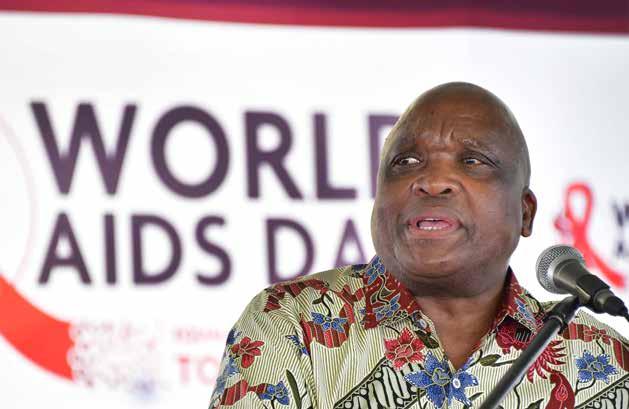
In 2021, KwaZulu-Natal, Mpumalanga and the Free State had the highest HIV prevalence rates at 18.3%, 15.9%, and
14.8%, respectively, while the Western Cape had the lowest at 8.3%, followed by the Northern Cape at 10%.
Research shows that the majority of the epidemic burden falls on Africans, who are more vulnerable and often excluded from accessing healthcare.
Meanwhile, the Minister applauded the Free State for doing well in terms of testing, having already surpassed the 94% threshold.
Youth
Phaahla said government was working around the clock to address the alarming increase in the nation's youth, which continues to experience high rates of new HIV infections.
“This is a critical issue if we are
to stem the tide of rising HIV infections.”
Recent data revealed that new HIV infections in young people aged between 15 and 24, account for roughly 14 000 new infections in young males and 55 000 in young women.
“In light of these numbers, we need to keep working together across all sectors to raise awareness and improve our messages about prevention and sticking to treatment.”
Phaahla commended the South African National AIDS Council for launching the South African National Youth HIV Prevention Strategy in June 2022, as a three-year youth HIV prevention campaign.
The Minister believes that
this is the key part of targeting young people, particularly adolescent girls, who are most vulnerable to new infections.
He said the goal of the campaign was to reduce the number of young South Africans who get HIV and other sexually transmitted diseases by 40%.
Phaahla urged Premiers, Mayors and Councillors to play their part in the AIDS response and to work with all social partners.
“We can only meet our targets if we work side by side with civil society, development partners, traditional and KhoiSan leaders, traditional health practitioners, organised labour, and business,” he said.
“However, each of us must step up and be counted in the
Public Sector Manager • December 2022/January 2023 34 FEATURE Source: SAnews
Additional reporting: Miriam Mokoena
Health Minister, Dr Joe Phaahla.
fight against the HIV epidemic, because while we may not all be infected, we are all affected.”
Progress
Phaahla reflected on the progress made in the fight to eliminate AIDS as a public health threat by 2030, as set by Joint United Nations Programme on HIV/AIDS.
He assured citizens that government was committed to reversing the impact that the
COVID-19 pandemic had on HIV prevention and treatment services.
In addition, government has put in place catch-up plans for HIV and TB so that services and care can be better integrated.
The new National Strategic Plan for 2023 – 2028 is expected to place people and communities at the centre of the country's efforts to overcome inequities in the response
to HIV and AIDS, sexually transmitted infections and TB.

“You may remember that in the past, someone close to you died from an AIDS-related disease every week and in every community. Those days are long gone and should never return.
“There have been many scientific advances in how HIV is treated, and we now know a lot more about the virus and how to treat it.”
He told the crowd that scientists are also hopeful about the benefits of treatment as a preventive measure and the progress being made toward ultimately finding a cure and a vaccine.
live longer and contribute to building the South Africa of our dreams.”
New treatment
In December 2022, the South African Health Products Regulatory Authority (SAHPRA) announced that it had registered Cabotegravir (Apretude 600 mg/3ml injection) – a long-acting HIV pre-exposure prophylactic PrEP.
“This is an ARV treatment that people living with HIV may use, together with other ARVs, to keep the virus in their bodies from making copies of itself. When such medicine is used to prevent HIV infection it is called PrEP,” explained SAHPRA in a statement.
Equalise
In addition, he announced that the country’s antiretroviral (ARV) treatment programme has resulted in increased life expectancy and low rates of HIV transmission from mother to child, which is one of the greater successes in the response efforts to save lives.
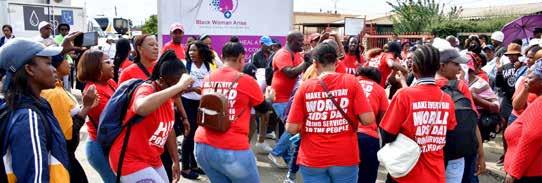
“This means that millions of South Africans who previously had little chance of having a stable quality of life can now
According to the regulatory authority, the treatment is the “first and only long-acting, injectable PrEP for reducing the risk of getting HIV. This drug is a safe and highly effective prevention option for people at substantial risk of HIV infection”.
This is expected to boost government efforts in reducing new infection rates.
“SAHPRA joins the global fight against this disease. The priority review pathway followed to assess and finally register [the] long-acting Cabotegravir marks a bold step in this direction,” said SAHPRA Chief Executive Officer, Dr Boitumelo Semete-Makokotlela.
Public Sector Manager • December 2022/January 2023 35
REPUBLIC OF SOUTH AFRICA
access to health services for all
SA's 24-hour space weather centre takes off
South Africa has a new 24-hour, state-of-theart regional space weather centre – the only one of its kind in Africa.
The centre was launched in Hermanus, Western Cape in November 2022. Higher Education, Science and Innovation Minister, Dr Blade Nzimande, described the launch as a historic development and illustration of the country’s excellence in science.

“It is yet another demonstration that the Department of Science and Innovation (DSI), together with its agencies, continues to respond to the socio-economic challenges of our country by using science, technology and innovation as a catalyst and catalyser for economic development.”
The new centre was developed by the South African Space Agency (SANSA) – an
Public Sector Manager • December 2022/January 2023 36 FEATURE
SAnews Additional
DSI
Source:
information:
Higher Education, Science and Innovation Minister, Dr Blade Nzimande
entity of the DSI.
SANSA had been operating the Space Weather Centre for the past 10 years, although with limited focus, monitoring the sun and its activity and providing space weather forecasts, warnings, alerts and environmental data on space weather conditions.
Just like harsh weather conditions on earth, space weather, such as solar storms can have devastating impacts on satellites, national power grids, and communication and navigation systems. For this reason, early warnings and forecasts are crucial for protecting infrastructure from space weather
phenomena.
Through SANSA, Nzimande said the DSI has now managed to improve the coordination of South Africa’s space arena to maximise the benefits of current and planned space activities.
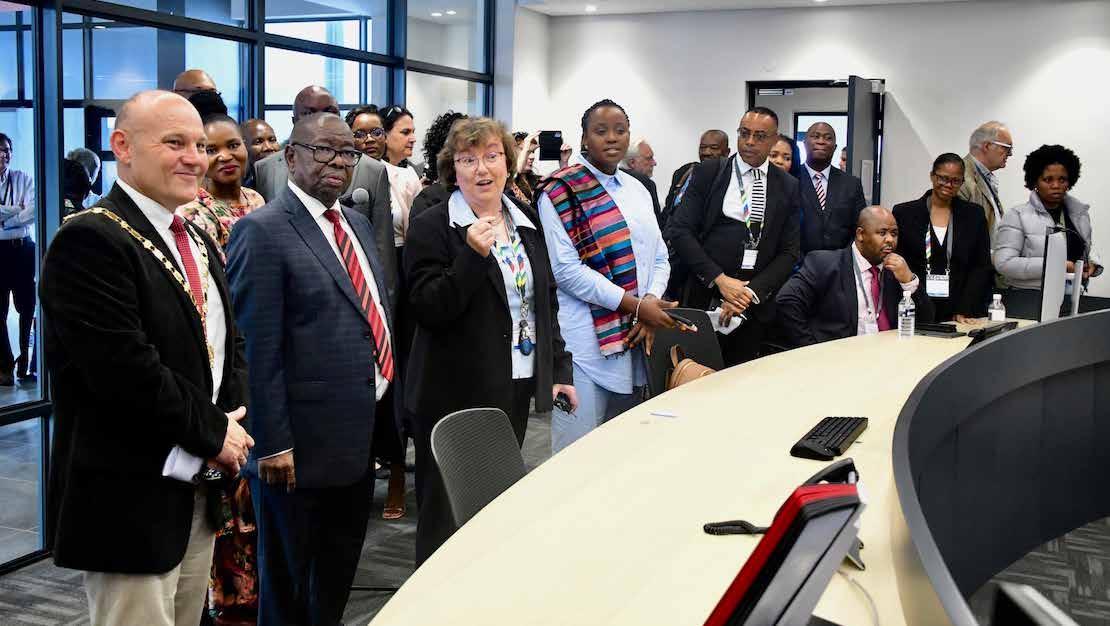
During the recent floods in KwaZulu-Natal, Nzimande said the agency provided satellite imagery to the National Disaster Management Centre and the Department of Cooperative Governance and Traditional Affairs to support the disaster response and understanding of the level of damage. The same service was provided at the Jagersfontein
mine waste dam that collapsed recently.
“The space weather capability that we are launching is a direct response to our good safety track record, which led to the International Civil Aviation Organisation selecting SANSA as one of the two regional centres to provide space weather services, including solar storm forecasts and warnings to the global aviation sector,” Nzimande said.
Development agenda
The unveiling is part of the overall strategy to position science, technology and innova-
tion at the centre of the country’s developmental agenda.
SANSA’s mandate is to promote and use space and cooperation in space-related activities, foster research in space science, advance scientific engineering and develop human capabilities in space science.
It also includes supporting the creation of an environment conducive to industrial development in space technologies within the framework.
The weather centre, which was completed at the end of September 2022, took three years to build. The upgrades include infrastructure develop -
Public Sector Manager • December 2022/January 2023 37
ment, instrumentation deployment, product and service development, and skills capability development.
Skills developement
Leading operations at the centre is Dr Mpho Tshisaphungo, supported by nine space weather forecasters, most of whom are young black female science graduates.
"The Space Weather Centre has opened up many opportunities for young people in South Africa to develop a wide range of skills – from mathematics and physics to computer science – because we also need developers for our space weather product development," said Tshisaphungo.
The total investment, according Minister Nzimande, amounted to R107.5 million over the three years, which included a ring-fenced es-
tablishment grant of R70.89 million received from the DSI and R36.6 million invested directly by SANSA.
Space
The Space Weather Centre is dedicated to growing the nation's science, engineering, technology and innovation sectors. This will offer opportunities to develop scarce skills and increase national research output, while ensuring that usable products and services are generated for
the benefit of the nation and Africa.
Through SANSA’s researchers, South Africa has a growing international footprint and impact on new research within the space sector.
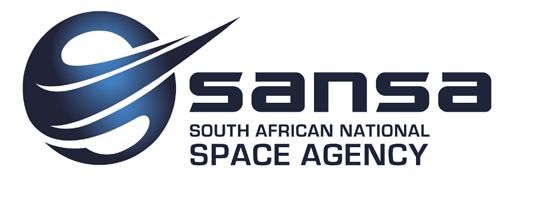
"It is yet another demonstration that the DSI, together with its agencies, continues to respond to the socio-economic challenges of our country using science, technology and innovation as a catalyst for economic development," said the Minister.
SANSA has since ensured its increased focus on transforming the space sector through skills development and public outreach.
The space agency, according to Nzimande, continues to implement activities targeting women in science and previously disadvantaged youth, while inspiring future space scientists and entrepreneurs through its public engagement programme.
“Thousands of learners have, through the years, engaged with SANSA experts at science and career festivals, school visits, science centres, and now even online.”
The Minister said he is heartened to witness the contribution of SANSA to the people and the global space industry. – SAnews.gov.za

Public Sector Manager • December 2022/January 2023 38 XXX FEATURE


FIGHTING CORRUPTION IS EVERYONE’S BUSINESS I KNOW. I ACT. I STOP CORRUPTION. Report fraud and corruption on 0800 701 701 Follow the conversation on #SAAgainstCorruption
NASA, South Africa renew lunar exploration
partnership
programme, Dr Badri Younes, joined SANSA officials at the sod-turning ceremony, where the LEGS antenna will be built.
"Location, weather and existing infrastructure make Matjiesfontein the ideal place to build this antenna.
"We really couldn't have asked for a better spot on Earth than here in South Africa, with whom we first partnered six decades ago to land the first humans on the lunar surface," said Younes.
knowledge," said DSI DirectorGeneral, Dr Phil Mjwara.
The Department of Science and Innovation (DSI) and the National Aeronautics and Space Administration (NASA) have signed a letter of intent to formalise a space exploration partnership.
The signing was followed by a sod-turning ceremony with NASA and the South African National Space Agency (SANSA), an entity of the DSI, signalling the renewal of the partnership through the establishment of a new communications facility that will help the Artemis missions return humans to the Moon.

Located in Matjiesfontein, approximately 240 km north east of Cape Town, the site will be one of three Lunar Exploration Ground Sites (LEGS) placed strategically around the globe.
These 18 to 24-metre communications antennas are intended to ensure near-continuous connectivity between astronauts on NASA's Artemis spacecraft and those who will subsequently come to work on and around the lunar surface.
Deputy Associate Administrator for NASA's Space Communications and Navigation
South Africa was home to a ground tracking station, outside Johannesburg at Hartebeesthoek, that played a critical role in NASA's Apollo missions in the 1960s. Artemis, name for Apollo's mythical twin sister, will land the first woman and person of colour on the Moon, paving the way for a long-term lunar presence, and serving as a stepping stone to send astronauts to Mars.
"We see this partnership as mutually beneficial. The Matjiesfontein ground station will alleviate increased demand for NASA's Deep Space Network, allowing Artemis to meet its goals and expand our scientific
The Matjiesfontein site will join future LEGS facilities at NASA's White Sands Complex in Las Cruces, New Mexico, and a still-to-be-determined location in Australia. With LEGS stations in North America, South Africa and Australia, the Moon will always be in Earth's view to ensure essential, enhanced direct-to-Earth communications capabilities up to two million kilometres away through NASA's Near Space Network.
"We are pleased that this project has reached a significant milestone with the support of the DSI as well as the partnership of NASA.
"The Matjiesfontien ground station extends SANSA space capabilities and specialisation, taking the agency a notch higher as a global player in space science and technology," said the agency's Acting Commercial Services Executive Tiaan Strydom.
"The Moon brought NASA and South Africa together 60 years ago. I'm so pleased it's done so again today," added Younes.
Public Sector Manager • December 2022/January 2023 40 XXX FEATURE
Source: DSI
Dr Phil Mjwara and Dr Badri Younes after signing a letter of intent to formalise a space exploration partnership.
What
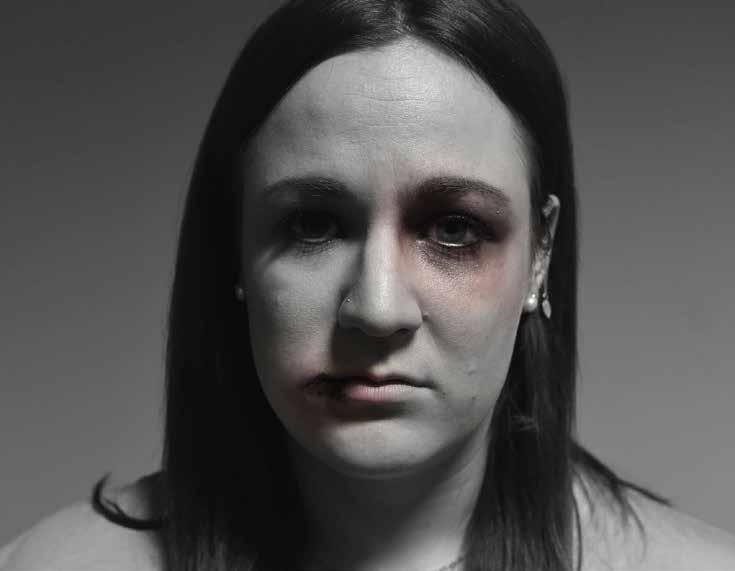
will
say? There is no excuse for abuse. People can only help if they know. TELL SOMEONE. Violence and abuse are poison to society. Let’s make it stop. Police: 10111 Stop Gender Violence: 0800 150 150 Childline: 0800 055 555
people
Pan-African Parliament
‘fully functional’ as it works towards restoring its image
The Pan-African Parliament (PAP), also known as the African Parliament, is working around the clock to restore its image under the new leadership, following scenes that hogged headlines last year.
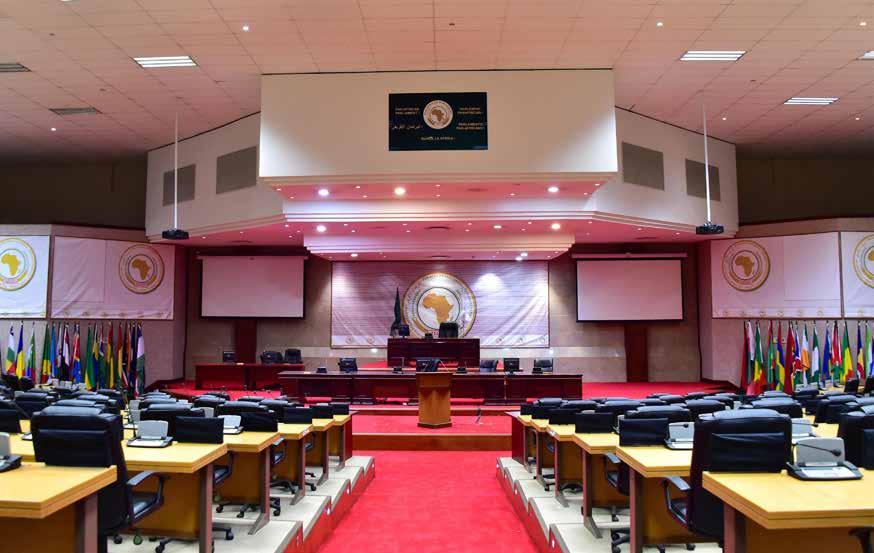
This is after the PAP de -
scended into chaos with some of the Members of Parliament exchanging blows over the principle of regional rotation in the election of the Bureau, forcing the session of May 2021 to be aborted.
The discourse emitted from the southern and northern
delegates demanding the rotation of leadership to end the dominance of some regions.
“First of all, what was seen on TV were unfortunate events and it's important to note that Parliament is back and fully functional,” said PAP Acting Head of Media and Communi-
cations, Jeffrey Onganga.
“There's a new Bureau that was elected in June 2022 and since then, a lot has been done to repair the image of the PAP and African leaders as a whole.”
Ordinary Session of the sixth Parliament
The Ordinary Session of the Sixth Parliament was held from 24 October to 11 November 2022, at Gallagher Convention Centre in Midrand, Gauteng. Ten newly elected members from various countries were sworn in during the sitting.
The sitting was guided by the African Union (AU) theme of 2022; “Building resilience in
Public Sector Manager • December 2022/January 2023 42
Source: SAnews
Additional reporting: Lia Naidoo
FEATURE
nutrition on the African continent: Accelerate the human capital, social and economic development”.
Speaking at the opening of the first Ordinary Session of the Sixth Parliament, Justice and Constitutional Development Minister Ronald Lamola noted that good governance is critical in ensuring that Africa begins to thrive in sectors such as infrastructure development and innovation.

He said with a population of about 1.4 billion and a median age of some 19 years old, the continent has untapped potential.
“We cannot continue to govern in the same way we have been governing in the past. Corruption and mis-governance should never define us. Instead, Africa should be defined by digitisation, innovation, world class infrastructure and modernisation of the African continent.
“As our continent has always been a reservoir of innovation and dynamic leadership, we need a generation across the continent that will give
rise to the ideas of the likes of Professor Ali Mazrui, Kwame Nkrumah, Patrice Lumumba, Jean Martine Cisse, Thomas Sankara, Nelson Mandela and Samora Machel,” he said.
mandate to contribute to the “strengthening of the culture of democracy, good governance and the rule of law in the continent”.
“This includes through the
which provides a framework for election monitoring on our continent. Some of our countries have held elections this year, still more are expected to hold them in 2023.
“We need to interrogate the responsibility of the PAP as an institution in supporting the AU,” he said.
Unifying the continent
Turning to unifying the continent through integration, the Minister highlighted that a key area of work is the African Continental Free Trade Area (AfCFTA).
“The AfCFTA is also one of the tools at our disposal to contribute to greater integration but it would require the finalisation of harmonisation of standards across the continent and the streamlining of our supply chains among others.
Lamola
implementation of the African Charter on Democracy, Elections and Governance,
“Much depends on the progress that we make at the national level to adopt the relevant legislation that will allow the commencement of preferential trade, for instance,
Public Sector Manager • December 2022/January 2023 43
emphasised that as an institution supporting the AU, the PAP has a critical
“Citizen engagement is another area that could be strengthened and I would like to encourage you to consider standing platforms/mechanisms for youth engagement as well as civil society because of its research capacity in the promotion of accountability, which is at the core of the work of Parliamentarians”
Minister of Justice and Correctional Services Ronald Lamola
on trade in goods,” Lamola said.
He added that another key area is the engagement of Africans not only on the continent but also abroad.
“Another area that we can exploit to realise the aspirations of the African people is to work with the African Diaspora, who can help build the much needed skills for future careers in our continent as well as contribute to the transfer of technology which we sorely need.
“Citizen engagement is
another area that could be strengthened and I would like to encourage you to consider standing platforms/mechanisms for youth engagement as well as civil society because of its research capacity in the promotion of accountability, which is at the core of the work of Parliamentarians,” he said.
During the session, various rules and procedures were adopted, including the principle of rotation for leadership positions across all organs of the PAP.
Relevance
Speaking to SAnews, Onganga shot down the notion that the PAP is an “expensive talk shop”.
“We must not undermine the power that comes with Parliamentarians from all over the continent convening. A Parliamentarian from South Africa, meeting with a Parliamentarian from Equatorial Guinea –there is something that comes from it,” he stressed.

“There is no way the AU executive can go to every country, every day, talking to
every citizen.”
For this reason, he believes that the PAP, whose member states delegates attend the sittings twice a year, remains the best mechanism to reach the people.
The PAP has been criticised for lacking real power. Only 14 out of 54 AU member states have ratified a 2014 agreement – known as the Malabo Protocol – to give the Parliament legislative powers. At least 28 countries are needed for this to happen.
“One of the priorities of this Parliament is for its members to ratify this protocol because that gives more power to the PAP and it addresses more concerns. It gives people the opportunity to see this Parliament in a position that allows it to do the work that it is supposed to do,” Onganga explained.
Established in March 2004, the PAP is one of the supporting bodies of the AU. It serves as a platform for citizens and grass-root organizations to have a voice in decisions and challenges that face Africa. It also facilitates and oversees the implementation of AU policies, objectives and programmes. – SAnews.gov.za
Public Sector Manager • December 2022/January 2023 44
FEATURE
PAP
Photo:

Celebrating South Africa's rich history
was ushered in our beautiful republic, following the first ever democratic elections, we embarked on a journey of building a united nation after our ugly historic past characterised by colonialism and apartheid.
“We embarked on a journey of reconciliation, which demonstrated to the world that humanity can embark on a journey of recognising that there is indeed only one race,” the Deputy Minister said.
Exclusive letters that were written by Former President Nelson Mandela from Pollsmoor Prison were showcased at the International Philately Exhibition held at Cape Town International Convention
Centre, from 8 to 12 November 2022.
Speaking at the event’s media launch, Communications and Digital Technologies Deputy Minister Philly Mapulane said the event was aimed at celebrating
South Africa’s rich history through showcasing stamps designed and collected throughout the world depicting events, heroes and heroines leading to South Africa’s democracy.

“Since 1994, when freedom
In a statement, the Deputy Minister explained that the event was a collaboration between South Africa and the Federation International De Philatelie – an organisation that plays an important role in the celebration of the international community of philately collection and exhibition.
“The theme for this year’s exhibition is “Road to Democracy,” which has a particular significance for us
Public Sector Manager • December 2022/January 2023 46 PROFILES IN LEADERSHIPFEATURE
Source: SAnews
Additional reporting: Miriam Mokoena
Photos: Philatelic Federation of South Africa
The Road to Democracy stamp.
socially and politically, and is a continuation of the celebration of our reintegration into the global community of democratic nations.
“We are honoured to extend our hand of Ubuntu to the philatelic community and thank them for the important role they have played even during our darkest period,
through propagating messages of the equality of all people through the design, collection and sharing of stamps,” said the Deputy Minister.
Stamps shaping history
The Deputy Minister detailed the important role played
by stamps in the history of mankind.
“Stamps have always played an important part in the transfer of cultural, social and historical messages, across the world. Stamps travel the world and in so doing, communicate important historical events to a global audience, and share with the world significant data on the evolution of our species, and in the celebration of our diversity,” he added.
The Deputy Minister commended the South African Post Office (SAPO) – a key role player in the exhibition – on its role in the development of philatelic material and keeping South Africa connected to the world.
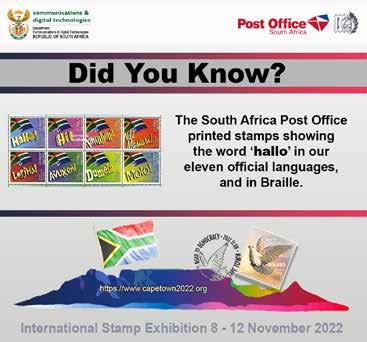
“After our transition to democracy, the SAPO ensured that the history of our nation was presented to the world in a positive and accurate context, while ensuring that we celebrate important milestones and recognise those behind these milestones.
“Today, across the world, stamps that celebrate the heroes of our struggle to attain democracy, and the important historical figures of our nation, enjoy a prominent role in stamp collections,” added Mapulane.
New limited stamp
Meanwhile, the SAPO has launched a new limited edition stamp titled, “The Road to Democracy”. It depicts a peace dove combined with words from the preamble of the Constitution of the Republic of South African, 1996.
“South Africa’s constitution is regarded as one of the most advanced in the world, and it entrenches fundamental rights, freedoms and civil liberties, while guaranteeing the independence of watchdogs such as the Public Protector and Auditor-General,” said the SAPO.
The stamp, which was designed by SAPO employee Thea Clemons, costs R5.40. “A total of 225 000 Road to Democracy stamps have been printed and once sold out, will not be reprinted,” added the SAPO.
About 1 500 delegates from about 60 countries participated in the exhibition, which showcased 1 600 frames of stamps from all over the world as well as exclusive letters written by Former President Mandela.
Collectors who are not in Cape Town can send an email to SAstamps@ postoffice.co.za to order the stamps.

Public Sector Manager • December 2022/January 2023 47
Poster supplied by DCDT
Calls to improve access to education for people with disabilities
The Department of Women, Youth and Persons with Disabilities (DWYPD) has emphasised the need for the allocation of resources and improved access to education for persons with disabilities. The message came as the country commemorated Disability Rights Awareness Month (DRAM) – from 3 November to 3 December.

“Imagine a South Africa where everyone can move freely and access information swiftly and effortlessly, especially persons with disabilities, and where assistive devices are

easily available at a reasonable cost.
“An environment where organisations fully understand how to align their corporate social investments to the National Development Plan, with regards to empowering persons with disabilities,” the department noted in a statement.
The department explained that the creation of barrier-free environments requires collective and concurrent action by law and policy makers, service providers, regulatory bodies, the private sector as well as organisations of and for persons
Public Sector Manager • December 2022/January 2023 48 FEATURE Source: SAnews
with disabilities.
The 2022 DRAM was held
under the theme; “Empowering persons with disabilities
A man using an assistive device to take down notes.
through resourceful, sustainable and safe environments”.
“This year’s theme emphasises the importance of resolving existing barriers towards disability inclusion by ensuring resourceful, sustainable and safe environments for and with persons with disabilities and also specially recognising that not all disabilities are visible,” added the department.
Article 9 of the United National Convention on the Rights of Persons with Disabilities emphasises that State Parties have legal obligations to ensure accessibility to persons with disabilities.
In this vein, the DWYPD said the development and implementation of national laws and policies that advance acces-
sibility must be promoted. It noted that accessibility “can be achieved by ensuring that services and information are tailored to the needs of persons with disabilities” and ensuring their participation and inclusion as well as “drawing attention to the most neglected groups within the spectrum of disability”.
The department highlighted six areas that need to be addressed in order to remove barriers to access and participation, and these include:
• Changing attitudes and behaviour;
• Access to the built environment;
• Access to transport;
• Access to information and communication;
• Universal design and access; and
• Reasonable accommodation measures.
It also emphasised that addressing the focus areas in their own right and as a holistic solution, requires collective and concurrent action by law and policy makers, service providers, regulatory bodies, the private sector as well as rights holders and/or their representative organisations.
Assistive technology
Assistive technology is an umbrella term that includes assistive, adaptive, and rehabilitative devices and services for persons with disabilities. These enable them to attain inde -
pendence.
“They include, for example, loop systems, sub texting and alternative input for cognitive assistance and computer or electrical assistive devices. When information and communication platforms and technology are available, affordable and accessible, they significantly improve the inclusion of persons with disabilities in all aspects of society,” the department explained.
Government intends to continue upholding and promoting the rights of persons with disabilities by ensuring that all government departments prioritise their responsibility towards the Disability Rights Agenda.– SAnews.gov.za

Public Sector Manager • December 2022/January 2023 49
A speaker and a sign language interpreter during the launch of DRAM.
A boost for Rooibos research

DSI’s investment, “taking the combined funding to almost R10-million”.
DSI Sector and Local Innovation Director Sunita Kalan said the funding was made available through the Sector Innovation Fund (SIF) – a programme aimed at increasing the competitiveness of various sectors in the economy by incentivising increased investment into research, development and innovation (RDI).
Public-private partnership
“Given the decline in private sector investment into research and development (R&D) in recent years, the SIF has helped to create an enabling environment for RDI priorities that are largely driven by the industry in a co-funding arrangement with government.
The SARC said it responded to the call with a proposal seeking to establish a scientific evidence base for the health benefits of Rooibos.
The proposal was among the six that were approved for funding in this phase of the SIF programme.
Strengthening research
SARC Research Director
Joe Swart said the partnership will give scientists the opportunity to further their work and to better understand and harness the true value of Rooibos.
The Department of Science and Innovation (DSI) has invested R4.8 million into scientific research into the health benefits of Rooibos.
“The investment is aimed at
unlocking the potential socioeconomic value of South Africa’s favourite tisane,” said the SA Rooibos Council (SARC) in a statement.
The council also revealed that it would match the
“The intention is to explore new approaches to fostering RDI partnerships with the private sector, as well as building stronger links between industry and the public science system,” she added.
“The demand for natural medicinal products in modern medicine as complementary or alternative therapies is on the increase, however, the potential medicinal values of these plants, including Rooibos, are not always properly researched and documented, and the industry and wider sector can benefit from an increased focus on R&D in this area,” he said.
While research has already confirmed the beneficial prop -
Public Sector Manager • December 2022/January 2023 50 FEATURE
Writer: Miriam Mokoena
Photos: SARC
erties of Rooibos, Swart said lack of funding was hindering progress. “The additional investment will help the industry to move forward with studies that include human trials – an important step in the development of therapies containing Rooibos as an active ingredient.
“Human studies are paramount as it will allow us to make scientifically-recognised health claims regarding Rooi-
bos,” he said.
Swart added that the trials have a potential to “uncover alternative ways to help manage many modern-day diseases, including cancer, heart disease and other metabolic diseases like diabetes and Alzheimer’s”.
According to the SARC, Rooibos has already been hailed for its chemoprotective properties – reducing the incidence of inflammation,
which is a leading cause of cancer, is good for the heart, helps to control blood glucose, fights inflammation and reduces stress and anxiety.
Growing interest in Rooibos research

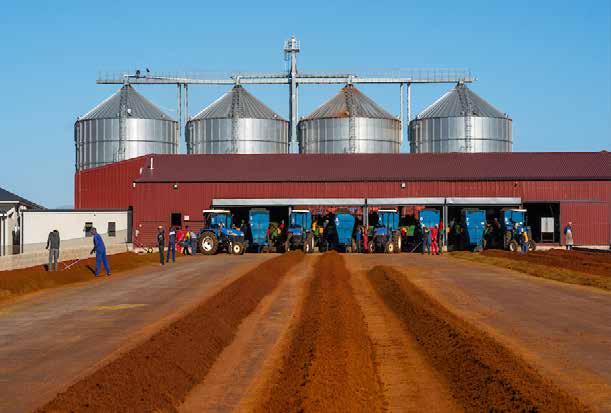
According to Swart, there is a growing trend among researchers to prioritise Rooibos as part of their novel food or functional food research, as well as for studies focusing on metabolic and lifestyle diseases.
“Since 2016, the SARC has funded 23 studies that were headed by 23 Principal Investigators, involving 43 national and international researchers (mostly professors and associate professors). Eight post-doctoral students were granted employment contracts and ten completed PhDs, 25 master’s degrees, and eight honours degrees were awarded. The body of
research has been published in 35 different articles and were presented at 53 conferences.
“Two researchers obtained fulltime employment at Stellenbosch University on completion of their Rooibosrelated studies and a further two had their master’s degrees bumped up to PhDs, as a result of the novelty of their Rooibos-related research study,” said Swart.
In addition to the funding provided to the SARC, the DSI has also strengthened the Rooibos and Honeybush sectors through support provided to community growers in the Western Cape and the Eastern Cape.
In 2021, the European Commission registered Rooibos in its lists of Protected Designations of Origin and Protected Geographical Indication, joining the likes of Champagne and Irish whiskey to be included in the European Union’s (EU) Protected Geographical Indication register. Besides allowing South African’s Rooibos industry to use the EU logo, the decision means that people cannot call tea Rooibos if it was not cultivated or wild-harvested in designated local municipalities of the Western Cape and Northern Cape.
Public Sector Manager • December 2022/January 2023 51
Workers at a Rooibos plant
Party seasonwardrobe must-haves
It’s finally summer and that means just one thing – it’s party season. Whether it’s family festive season get-togethers, office parties or friends enjoying a dinner – these are some of the season’s must-haves to amp up your wardrobe. Happy Holidays!
Ladies
1. Take advantage of the warmer weather with this long, strappy satin dress in this gorgeous orangey bronze. Get it at Zara: R1 399

2. Summer is all about bright colours and light fabrics, like this orange shirt from the new Brasserie Hennes collection from H&M: R359.

3. Embrace that next level energy of rapper Cardi B with her brand new collection in collaboration with Reebok. Expect bright colours and bold styles like these Cardi Slides in ultima purple, R1 199.


Get out your dancing shoes – and if you haven’t treated yourself to a pair recently, grab these with the block heel from Aldo: R1 399. There’s nothing like a pair of statement earrings to elevate your look, whether it’s smart casual or formal. We adore these sunflower earrings from French jewellery designer Isabelle Toledano, available from 24s.com R1 300

Public Sector Manager • December 2022/January 2023 GROOMING AND STYLE
Writer: Gilda Narsimdas
Photos: Gilda Narsimdas
1 2 3 4 5 * Prices correct at the time of writing
6. Inspired by nature, the new Adidas collaboration with producer/rapper Pharrell Williams is a wonderful extension of his self-expression. We love the entire collection, but especially these Hu NMDs, Adidas: R4 499

7. Stay comfortable and stylish in these slim-fit chinos from Levi’s. They come in a variety of colours and the tapered leg has added stretch in the fabric: R1 099.

8. There’s nothing like a cotton shirt with a good fit. Pair this pink shirt with either shorts for a casual look or smarten up with pants for day or night, Woolworths: R399

9. There is a reason Sebago shoes have reached icon status, they are timeless leather boat shoes that last for years. They should be a wardrobe staple, get the original dark brown docksides, Sebago: R2 500

10. We love a versatile blazer you can pair with pretty much anything to spruce up your look. Try this Comfort blazer from

Public Sector Manager • December 2022/January 2023 53
6 7
9
Men * Prices correct at the time of writing
8
10
Festive feast
The festive season is meant for people to spend time with family and friends. Say goodbye to hours in the kitchen prepping your Christmas lunch. We have some quick and easy delicious recipes that will have the family lining up for seconds.
Roasted sweet potato salad (courtesy of www.taste.com.au)
Ingredients:
• ¼ cup fresh cream.
• ¼ cup mayonnaise.
• 1 tablespoon fresh lime juice.
• 2 teaspoons smoked chipotle seasoning.
• 2 tablespoons extra virgin olive oil.
• 1.2 kg sweet potato, coarsely chopped into 5 cm pieces.
• 1 corncob.
• 1 red capsicum (bell pepper), deseeded and chopped.
• 2 green shallots sliced.
• Fresh oregano leaves, to serve.
• Combine the fresh cream, mayonnaise, lime juice and seasoning in a jug.
• Cover and set aside to allow the flavours to develop.
• Place the oil in a large baking dish and preheat for five minutes.
• Add the sweet potato and corncob.
• Bake, turning halfway through cooking, for 40 minutes or until the sweet potato is crisp and corn is tender.
• Transfer the sweet potato to a serving platter.
• Use a sharp knife to cut down the length of the cob close to the core to remove the kernels.
dressing and sprinkle with oregano to serve.
Roast Beef
Ingredients:
• 2 kg deboned rib eye roast.
• Salt and freshly ground pepper to taste.
• 4 tablespoons olive oil, divided.
• ¼ cup chopped garlic.
• ¼ cup chopped Fresh rosemary.
• String to tie roast.
Instructions:
• Preheat your oven at 180 °C.
• Heat two tablespoons of olive oil in a pan over medium heat.
• Generously season your
roast with salt and pepper, roll it and tie with string.
• Mix rosemary, garlic and two tablespoons of olive oil and stir.
• Sear roast in heated pan on all sides. Remove pan from the stove and brush the herb and garlic mixture all over the roast.
• Place roast into a baking tray and put into the preheated oven to let it bake for one to one-and-a-half hours.
• Periodically baste the roast with left over herb and garlic mixture.

• Allow the meat to rest for 10 minutes, carve and serve.
Instructions:
• Preheat your oven at 180 °C.
• Scatter corn on top of the sweet potato with the bell pepper and shallot.
• Drizzle over the chipotle

54 XXX FOOD AND WINE
Writer: Nicholas Francis
Photos: Shutterstock
Creamy Macaroni and cheese

Ingredients:
• ½ cup butter.
• ½ cup flour.
• ½ onion chopped.
• 1 tablespoon crushed garlic.
• 1 punnet mushrooms sliced.
• 2 cups cream.
• 2 cups milk.
• 200 g cheddar or gouda cheese grated.
• Salt and pepper, to taste.
• 500 g macaroni cooked.
Instructions:
• Preheat your oven at 180 °C.
• Melt the butter in a saucepan over a medium to high heat.
• Drop in onions and garlic and sauté until onions are golden brown.
• Add in the sliced mush-
rooms and stir continuously until lightly cooked.
• Throw in your flour and stir until clumps are formed with the mixture in the saucepan.
• Gradually pour in milk and whisk continuously until sauce does not have any clumps.
• Add half of the grated cheese and continue whisking.
• Add salt and pepper to taste.
• Pour in the cream whilst whisking the sauce.
• Remove from the stove once all clumps have disappeared.
• Mix the cooked macaroni and sauce in a casserole dish and top with remaining cheese.
• Place in oven and bake for 20 minutes or until the cheese is golden brown.
Gingerbread
Trifle (courtesy of www.delicious.com.
Ingredients: 900 ml double cream. 1 cup dulce de leche (or other caramel sauce). 250 g sour cream. 1/3 cup (40g) icing sugar, sifted. 800 g gingerbread cake (or other bought cake). 90 ml brandy.

• 1½ teaspoon cinnamon.
• 200 g gingerbread biscuits, crumbled.
Instructions:
• Divide double cream evenly between two bowls.
• Add the dulce de leche to
one bowl and whisk until thickened.
• Add sour cream and icing sugar to second bowl and whisk until thickened.
• Cut cake into 2 cm thick slices, and then layer one-third of slices over the bottom of a 3 l (12-cup) trifle dish.
• Drizzle with one-third of the brandy, sprinkle over one-third of the cinnamon, then one-quarter of the gingerbread crumbs.
• Top with one-third of the dulce de leche mix, then one third of the whipped cream mixture.
• Repeat layering process twice, finishing with remaining biscuit crumbs.
Public Sector Manager • December 2022/January 2023 55
Family Friendly Festivities in Tulbagh this festive season
It’s Summer. It’s hot. You are at the beach, with the south-easterly wind blowing sand in your face. Your sunburnt kid needs the bathroom but the queue for the public toilets snakes round the building.
You’ve already bought one ice cream, which is now melting into the sand, so you traipse back to get a second, while your other kid cries because “why can’t I have another one, too?”. It’s time to get home but because there were so many crowds this morning, you had to park nearly a kilometre down the road. And as you trudge through the throngs of people,
you wonder if there could be a better way to spend the festive season. Well, there is.
Less than two hours from Cape Town, but far from the madding crowd, lies the verdant, kid-friendly, pet-friendly, laidback Tulbagh Valley. Our family spent a magical getaway at this place in August 2022.
Raptor Rise Guest Farm provided stylish, well-appointed accommodation with plenty of room and garden space for kids and the pooch to play in. There are friendly horses, well-behaved sheep and lovely walks with lots of porcupine quills for those on the lookout.
A gorgeous pool is a haven on hot summer days while the views from braai areas allow for lazy afternoons in this breathtaking scenery.
For bigger parties, the farm allows groups to come together in communal spaces while still allowing individuals to retreat to their private rooms or cottages. It’s a gem; but there are many accommodation options around the area to suit a variety of budgets. For instance, the Geodomes at La Bruyere Farm provide a novel and luxurious way to enjoy the tranquility of the surroundings, and if you are wondering if this
is kid-friendly, go and have a look at their Moonrise dome, which lavishes a tree house inspired by the inner kid in all of us.

There are many wineries a stone’s throw from town, which allow for adults to relax while kids play in beautiful gardens.
Saronsberg is a treat for all, with delicious wines at reasonable prices, beautiful sculptures (both inside and in the garden) and a shady garden, making it worth the short drive down the road. Just a bit further, Obiqua restaurant at Duikersdrift has a delicious, Mexican-inspired menu and a relaxed, warm
Public Sector Manager • December 2022/January 2023 56
Words: Duane Stacey
TRAVEL
Additional Reporting: Robyn Peverely Photo: Robyn Perverly
ambiance. The kids had a ball in the playground while our pooch slept under our table –another fabulous afternoon on all fronts.
Montpellier Wine Estate is also an absolute must for families. It has a beautiful, well established garden with nooks and crannies that make you feel like Alice and you’ve just gone down the rabbit hole.
It is a paradise for kids to explore while your furry friends wander and play off the leash. In keeping with the French theme, waitrons are dressed in quintessential Parisian attire, and a petanque court beckons.

They serve cheese platters during the week and pizzas in the garden over weekends, and accommodation options are varied, but all are tastefully put together with eclectic, vintage style. Don’t leave the Tulbagh Valley without at least whiling away an afternoon at this treasure of a place.
Amongst all this decadence, some might be in need of activity, and Tulbagh has much to offer. There are many hiking trails in the area, which also

makes trail running a great option. The Waterval Nature Reserve is a great option for families as the hike to the waterfall is relatively easy without compromising on beauty and tranquility.
Murludi also offers beautiful hiking trails as well as a picnic area (they also have picnic baskets for sale on weekends) with a children’s playground; but note that dogs aren’t allowed at this venue.
Of course, the mountains also provide a perfect playground for cycling enthusiasts. The area has well maintained tracks and has been host to three ABSA Cape Epics, two SA National events (among many other smaller events), and with over 70 km of tracks and trails, it’s definitely worth exploring.
The Tulbagh Mountain Biking Club is a great point of contact, with detailed and clear information for visitors.
Take a stroll down Van der Stel Street (the main street) to look at beautiful historical buildings as well as quaint restaurants and shops; check out Made in Tulbagh (M.I.T)
– a coffee, wine and craft collective that supports local artisans and industry. Church Street (below Van der Stel) is also worth a look, with old buildings that have been lovingly and tastefully restored. The Information Bureau (which doubles as the Earthquake Museum), at the end of Church Street, is full of interesting accounts of the people and heritage of the town.
Do yourself a favour this festive season; trade the sandy sandwiches, sunburn and swarms for something that will leave your heart (and your cup... and your belly... and your picture gallery) full to the brim.
Know before you go:
• Tulbagh can get very hot in summer. Dress and pack accordingly and look for air conditioning, fans, shade and water when booking accommodation.
• This is one of the most petfriendly areas I’ve travelled to, but it’s always worth checking with venues, and making sure that pets are safe and enclosed if you need to leave them at your accommodation.
• Use different routes for the journey there and back; the drives are spectacular.
Public Sector Manager • December 2022/January 2023 57
Photo supplied by Robyn Perverly
Public Sector Manager • December 2022/January 2023 58 XXX 30916 086 726 1681 siu@thehotline.co.za www.thehotline.co.za www.thehotlineapp.co.za UNITE AGAINST CORRUPTION Repor t corruption in government , municipalities and state owned entities to the SIU SPEAK OUT NOW! SIU Hotline: 0800 037 7 74 Special Investigating Unit @RSASIU



























































































